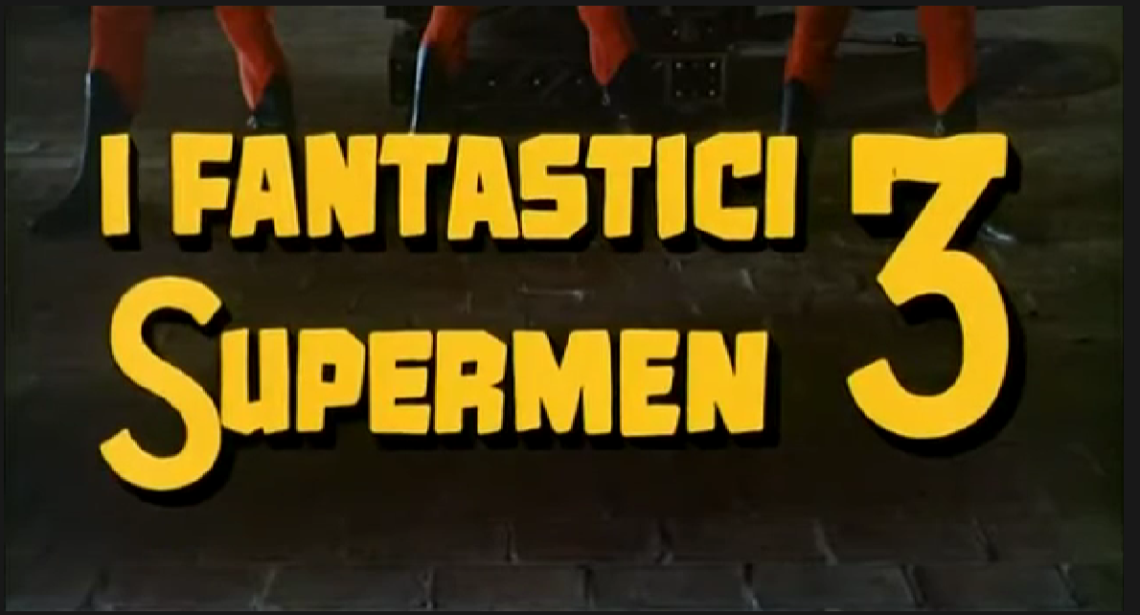-
#531 – The Gingerweed Man (2021)
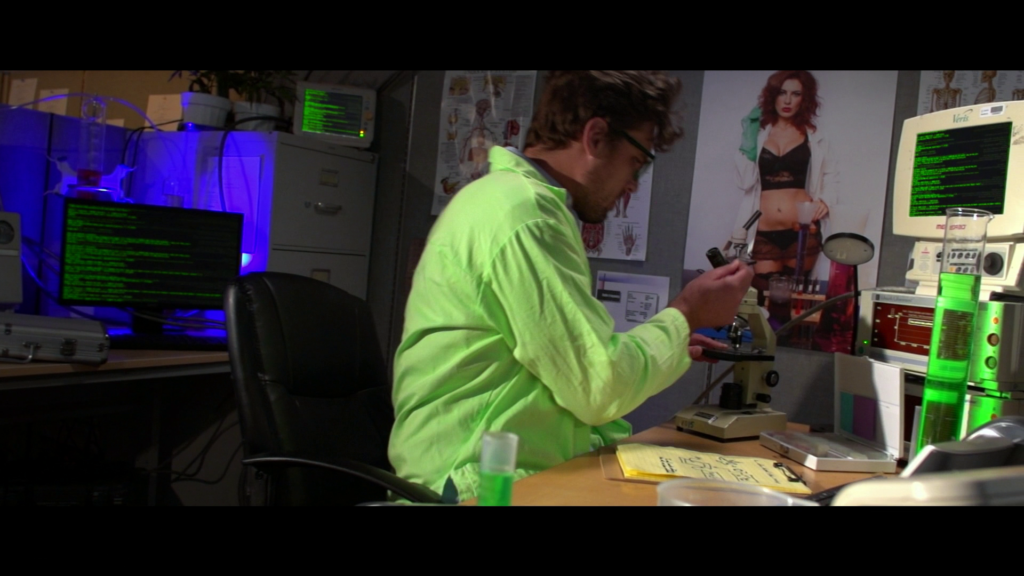
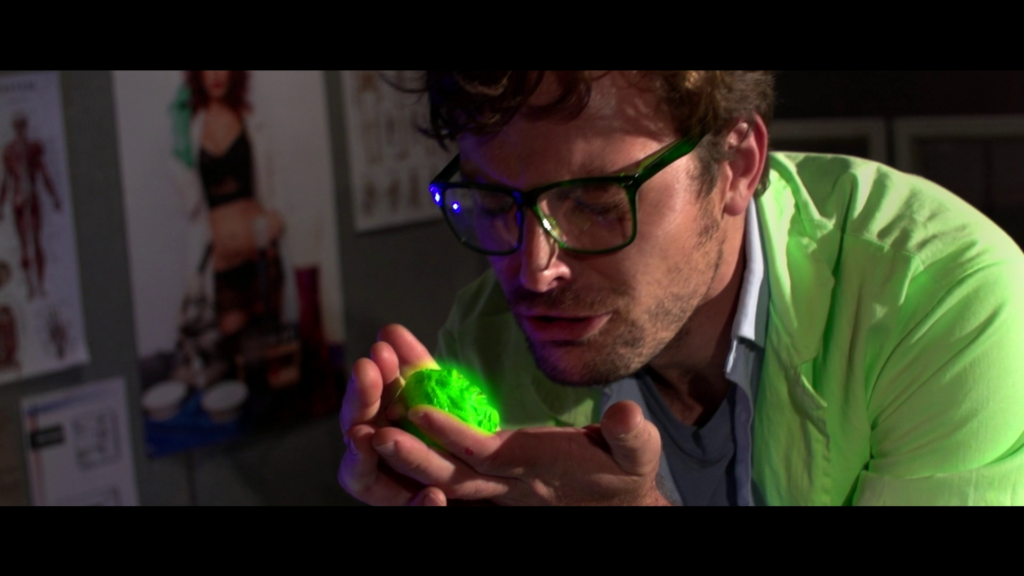


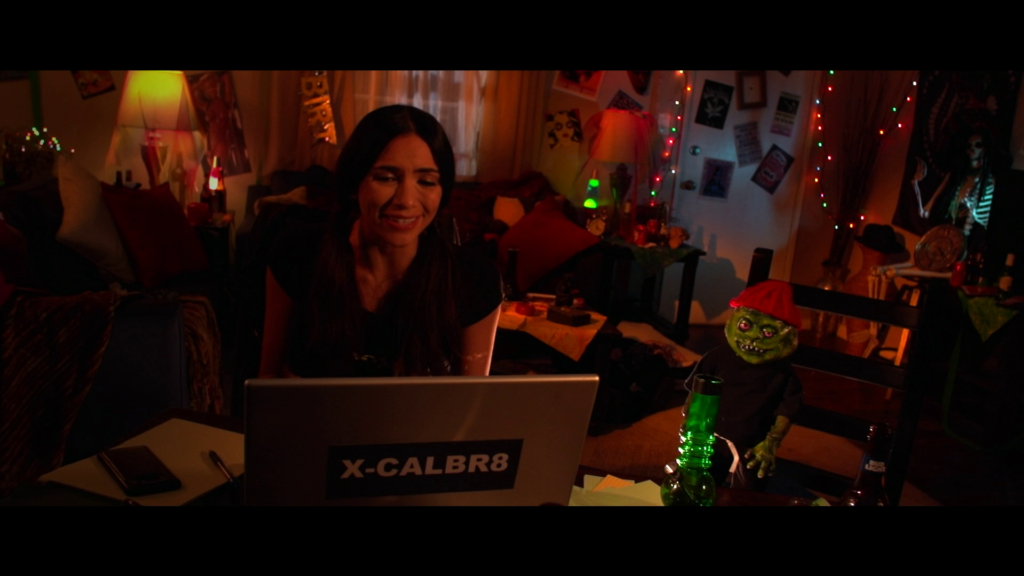
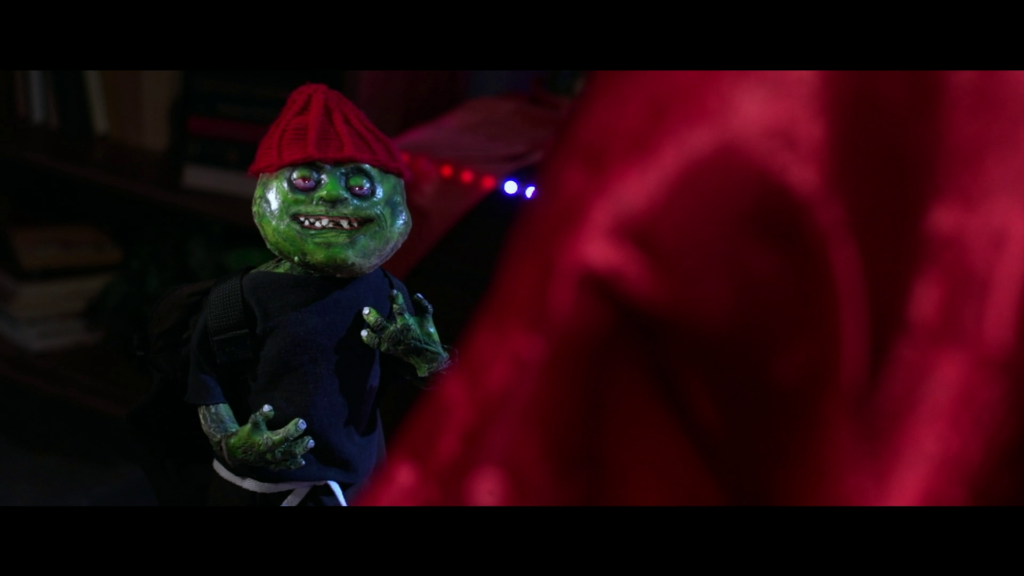
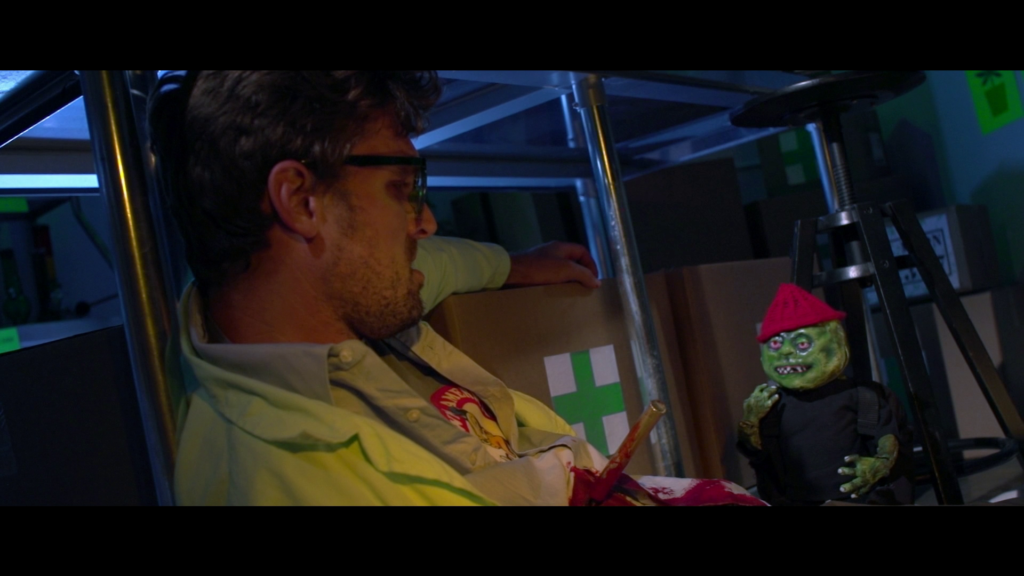
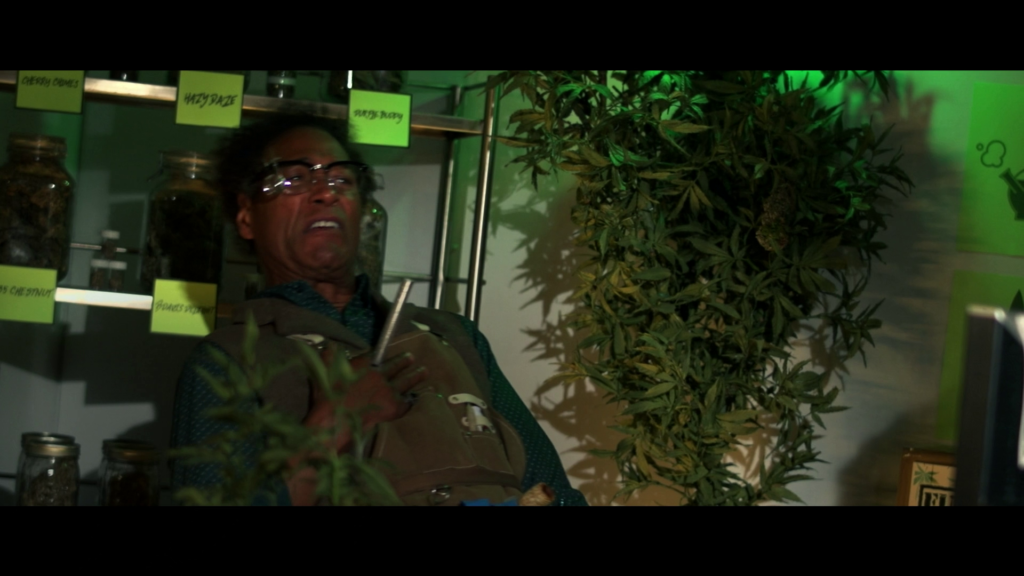
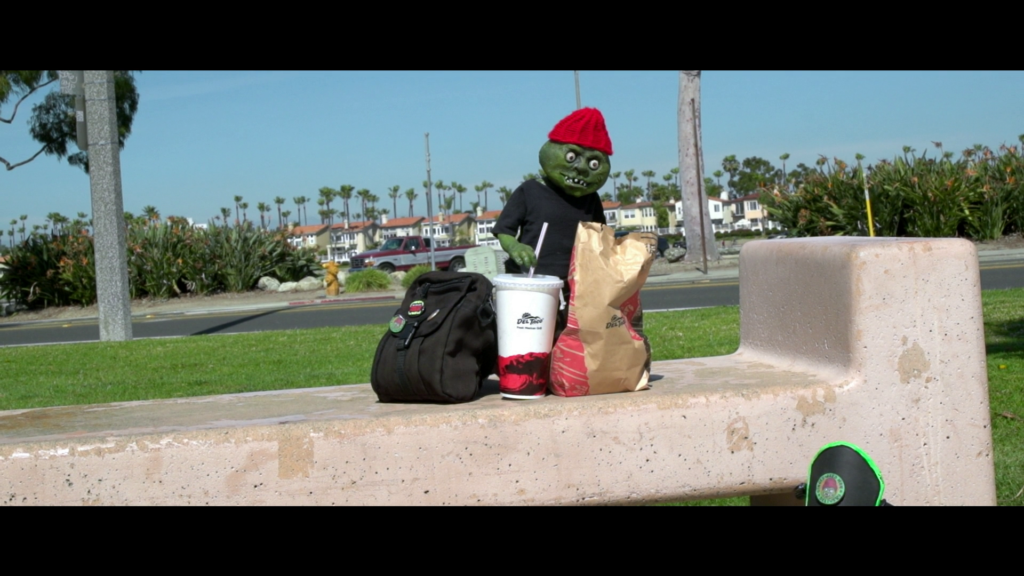
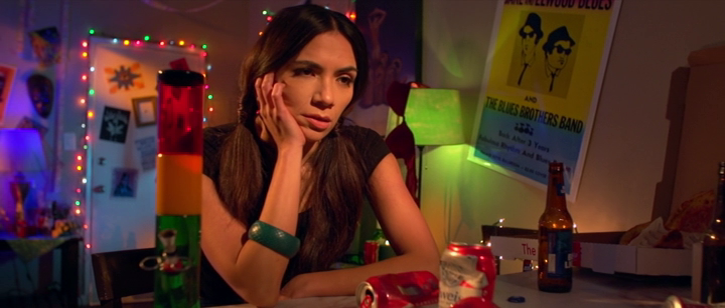
The Gingerweed Man (2021)
Film review #531
Director: Brooks Davis
SYNOPSIS: The Gingerweed man has started a weed delivery service in the city, catering to all sorts of clientele. When he stumbles upon a living, super strain of weed, he finds himself having to prevent it from falling into the wrong hands and being used for evil…
THOUGHTS/ANALYSIS: The Gingerweed Man is a 2021 film and a spin-off of the Evil Bong film franchise. From the opening, we see that the Gingerweed Man has set up a weed delivery service with his partner Barbara, and delivers weed to all the wacky people around town. Meanwhile, a scientist has managed to create a living, super strain of weed powerful enough to save or destroy the world. The evil “Smokeahontas” hunts down the scientist, who manages to hide the super weed and subsequently falls into the hands of the Gingerweed Man. The film’s story is fairly easy to follow, although offers nothing really of any substance. As with the Evil Bong films from which it spawned, the film is only going to be entertaining if you are as high as a kite; the humour is crude most of the time, and apart from that, just doesn’t give anything entertaining to the viewer. Luckily, at just over fifty minutes long (spread over two chapters), it’s fairly quick and harmless, and the short runtime means it doesn’t waste time with extended dialogue or pointless things.
One of the main problems with the film is that the main character, The Gingerweed Man, is not really interesting, and feels like a mish-mash of tropes: he dresses like a stoner, but talks like a posh Englishman with the accent to match. I’m just not sure how to situate the character, so it’s difficult to see where the comedy comes from. Smoke-ahontas as the villain doesn’t seem to really do anything other than to chase other characters, and “Buddy” as the super weed strain…thing is just an annoying high-pitched mascot thing which you will grow tired of quickly.
The Gingerweed Man could have been a chance to try something new after all the Evil Bong movies which are essentially all the same. Of course, being made by Full Moon Entertainment, it was never going to push things in an innovative or original way, but it is at least a bit different (in that it actually has some sort of plot). The film is shot decently, and there’s more than two different sets, so that’s a win. Overall though, I think it’s safe to say that The Gingerweed Man isn’t really anything worthwhile, unless you’re so high you’re detached from reality.
-
#530 – Bruce Gentry (1949)
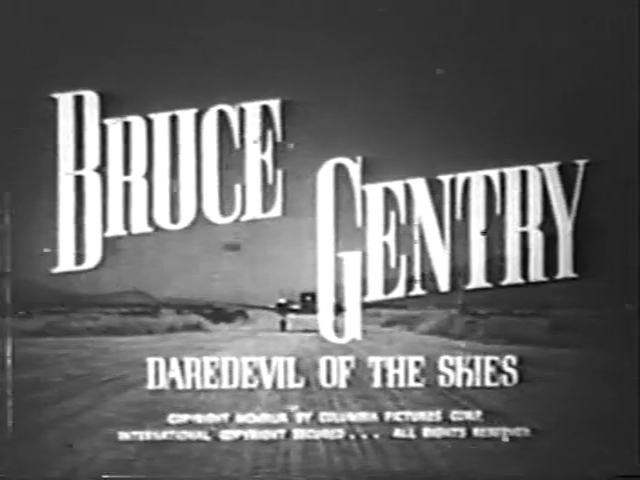
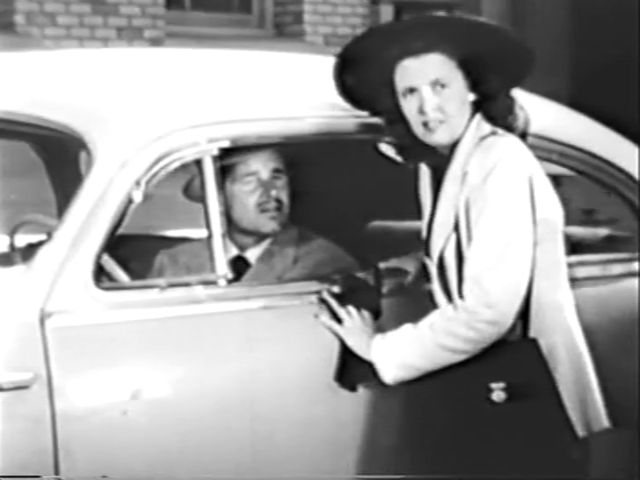
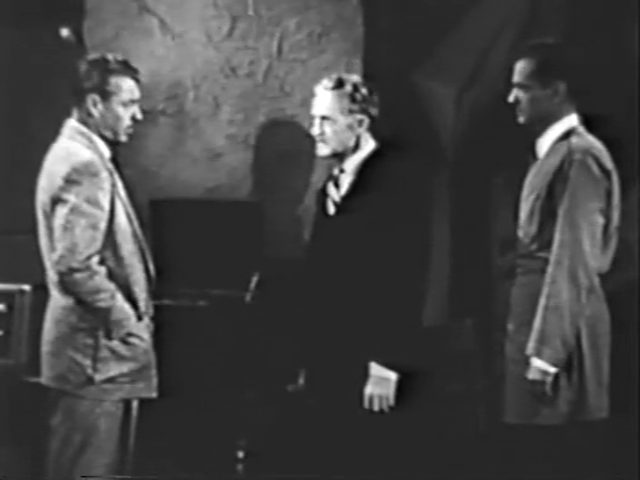
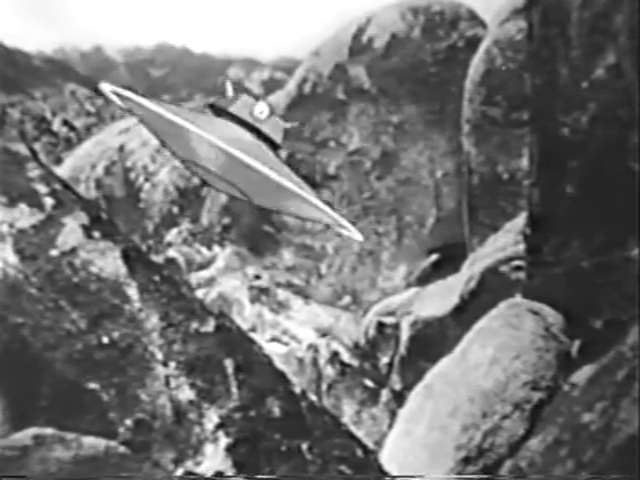
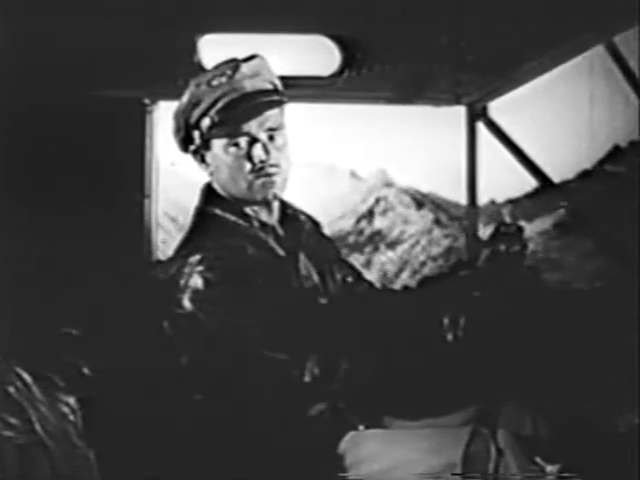
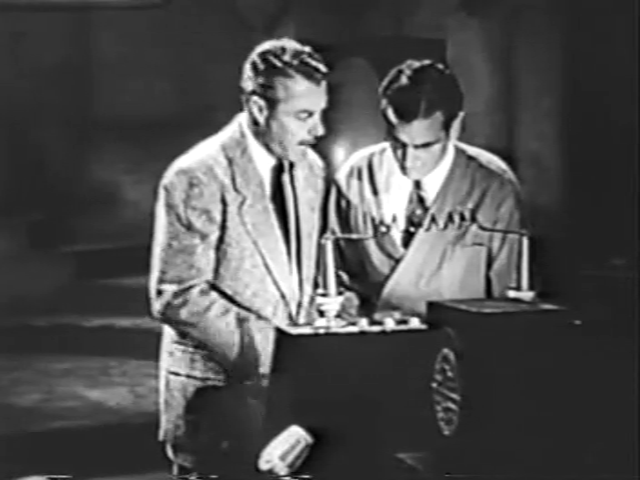
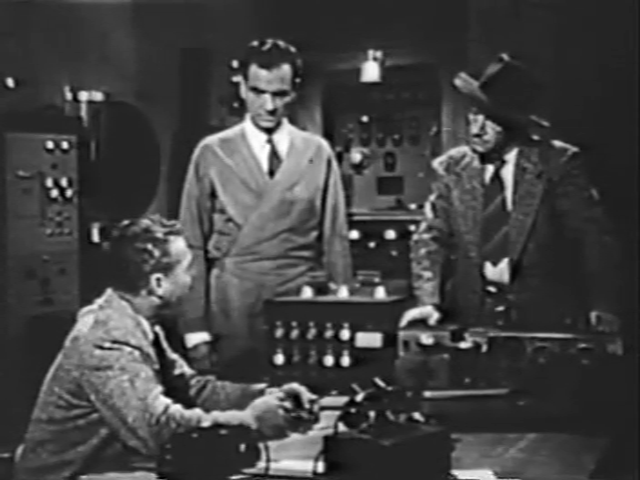
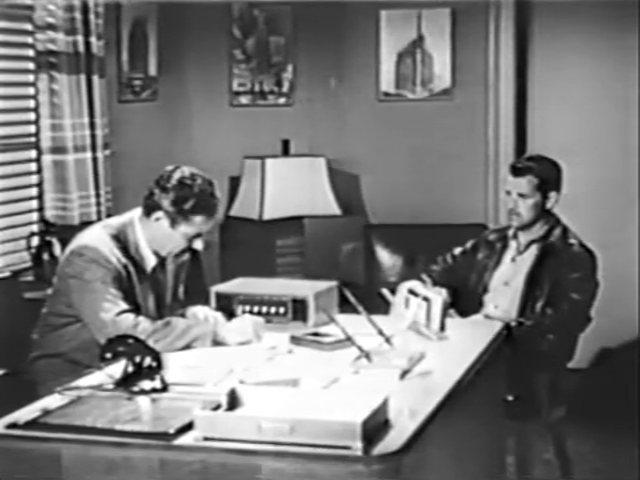
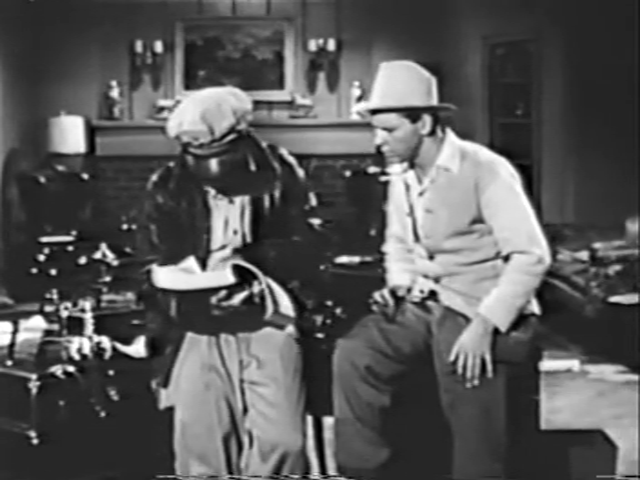
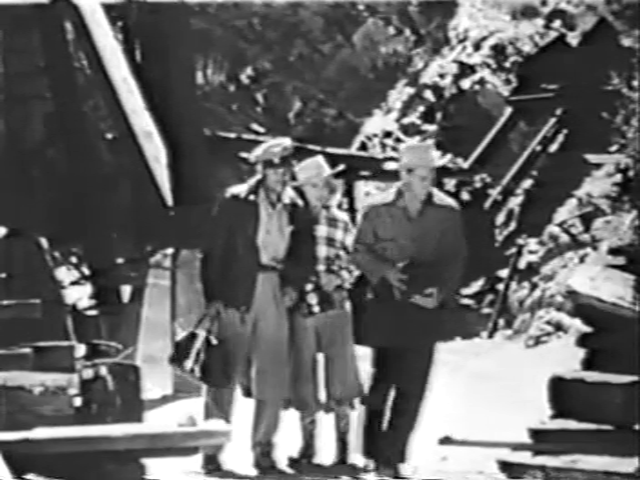
Bruce Gentry (1949)
Film review #530
Directors: Spencer Gordon Bennet, Thomas Carr
SYNOPSIS: Bruce Gentry, a charter pilot, has gone to see his friend is Dr. Benson, but the scientist is kidnapped by a mysterious gang led by a man known only as “The Recorder,” who wants Dr. Benson to work on their “flying disc” machines to unleash an attack on the country. Bruce teams up with Paul Radcliffe, an industrialist, alongside ranchers Juanita and Frank, in order to rescue Dr. Benson and put The Recorder’s gang out of action…
THOUGHTS/ANALYSIS: Bruce Gentry is a 1949 film serial based on the comic strip centred around the character of the same name. The film opens up with Bruce Gentry, a charter pilot, who gets into a fistfight with a gang of henchman less than a minute into the runtime. When Gentry’s friend Dr. Benson is kidnapped by a criminal gang to work on their inventions. Bruce teams up with Paul Radcliffe, an industrialist, and ranchers Juanita and Frank, whose land contains a mine where materials where Plutonite can be found, which the gang need to complete their machines. Together, they all try to rescue Dr. Benson and stop the criminal gang, led by the mysterious “Recorder.” The fifteen part serial has all the components that are very typical of the format, with each chapter revolving around the back-and-forth between the good guys and bad guys as they scheme and counter-scheme one another. It’s formulaic, but no less so than any of the other serials of the time. The use of airplanes as one of the focal points of the serial, and the main character being a pilot was again a popular choice of serials, as they were firmly in the public’s imagination after the second world war, and were seen as heroes. Unfortunately, there’s not much plane action in this; merely travelling from one destination to another, and usually not making it, as Bruce typically has to jump out of the plane at the last second to avoid being killed in typical cliffhanger fashion. There’s no dog fights or combat in the skies, which is something other serials do, so it is going to pale in comparison to others, and it feels like more could have been done instead of the forgettable schemes we get. The plot barely moves forward at any point, and is stuck at the initial stalemate between the heroes and villains until the final chapter.
The cast of characters is pretty bland: Bruce Gentry is a typical male lead (as with nearly all of these serials), but he doesn’t have anything special or interesting to set him apart: he just flies a plane occasionally. The rest of the characters are also unimportant: Paul Radcliffe, who hires Bruce to investigate the criminal gang, wants the secret of the flying disc’s that the gang uses for himself, but keeps that a secret. This could have led to an interesting side story, but it’s never really followed up. There’s Juanita, the one female character (apart from Paul’s secretary) who has some fight in her, but usually just falls into the role of being kidnapped every other chapter. Frank is completely ineffectual, and just serves as another pair of hands, and the henchmen are completely unremarkable. The Recorder, the mysterious villain who leads the criminal gang, is only heard through voice recordings (hence the name I guess), and while his identity is kept secret throughout the serial, his eventual reveal comes long past the point of being invested in this serial.
As mentioned, the serial does little to try anything new, and the lack of action that isn’t just fistfights makes everything very predictable and dull. One noteworthy element is that this serial is the first time a “flying saucer” was featured on screen, with the criminal gang’s “flying discs” being their main weapon. They are mostly seen as a traditionally animated object flying towards the screen, which does look a bit out of place, and could probably achieved without resorting to animation and creating something so distractingly different to the rest of the serial. This technique was done in other serials, most notable in the Superman serials, but this was typically for when Superman had to fly, which would have been difficult to film in such low budget, low-tech conditions. In Bruce Gentry, I’m sure they could have just used a model to the same effect. Directed by Spencer Gordon Bennet, who directed by so many similar serials, Bruce Gentry has all the pieces of a typical serial, but fails to offer anything in terms of an exciting plot, interesting characters, or unique sci-fi premises. I’d rank it below average, but definitely not the worst of the movie serials (only because there are some really bad ones).
-
#529 – Evil Bong 888: Infinity High (2022)

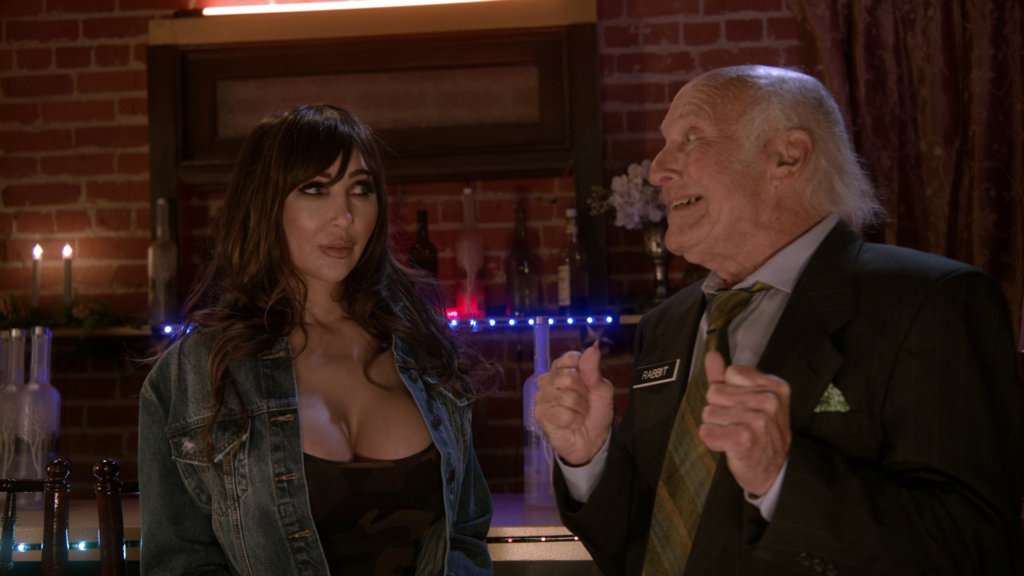

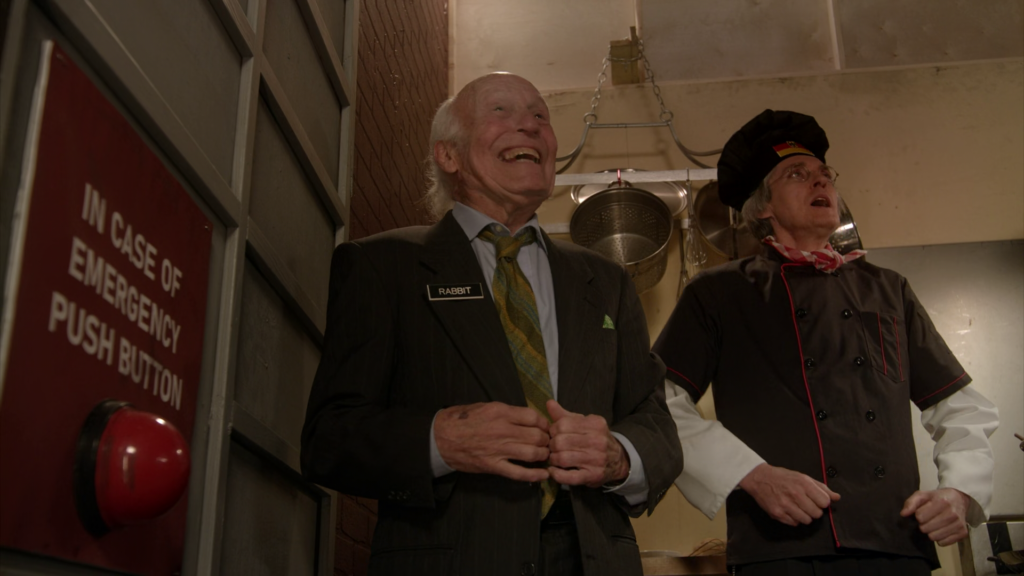
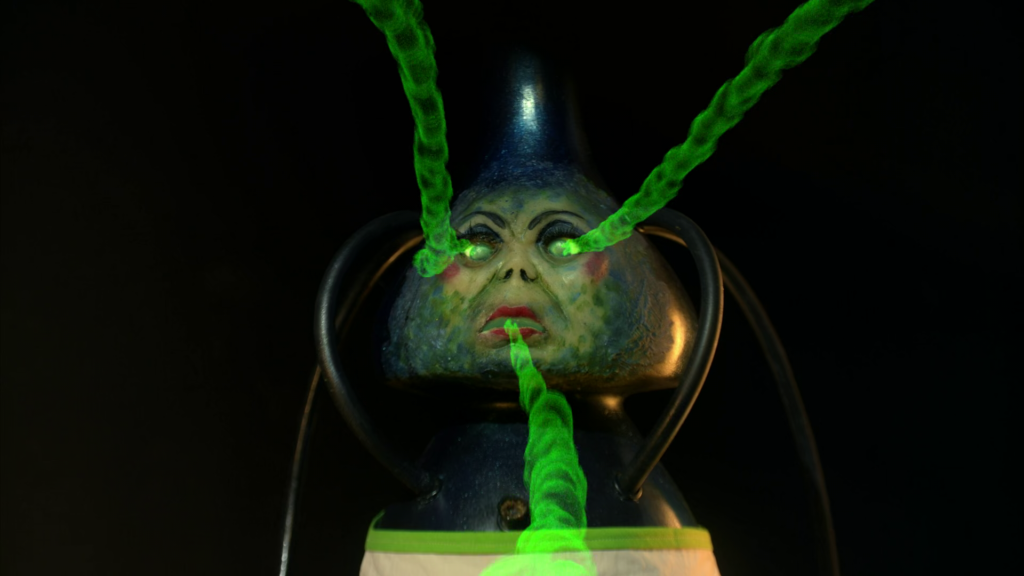
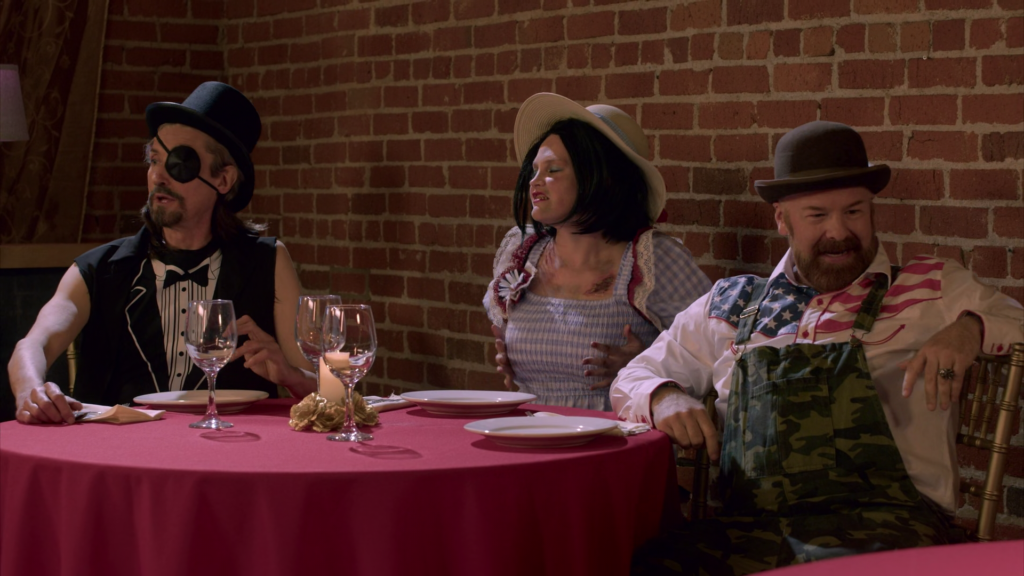
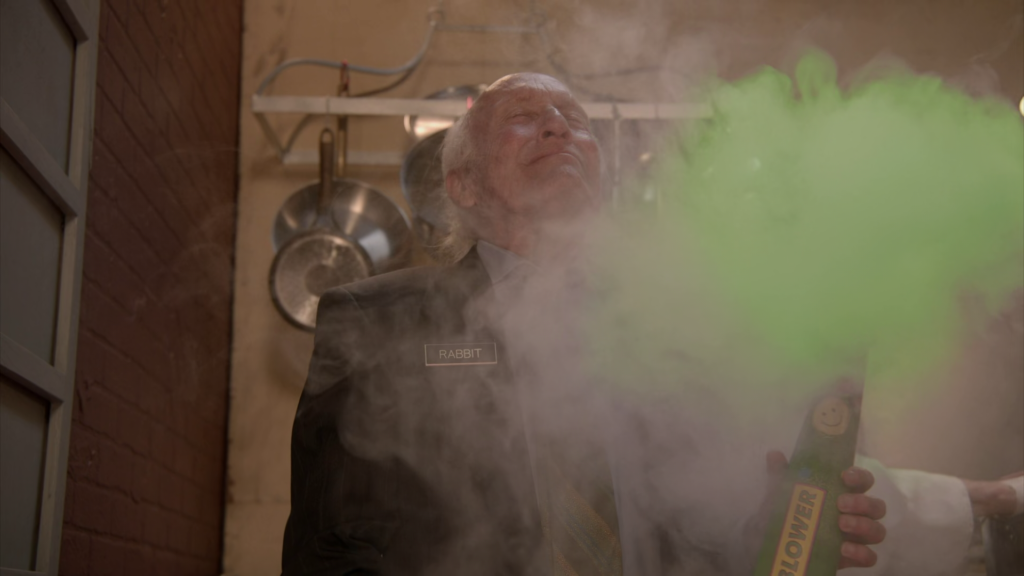
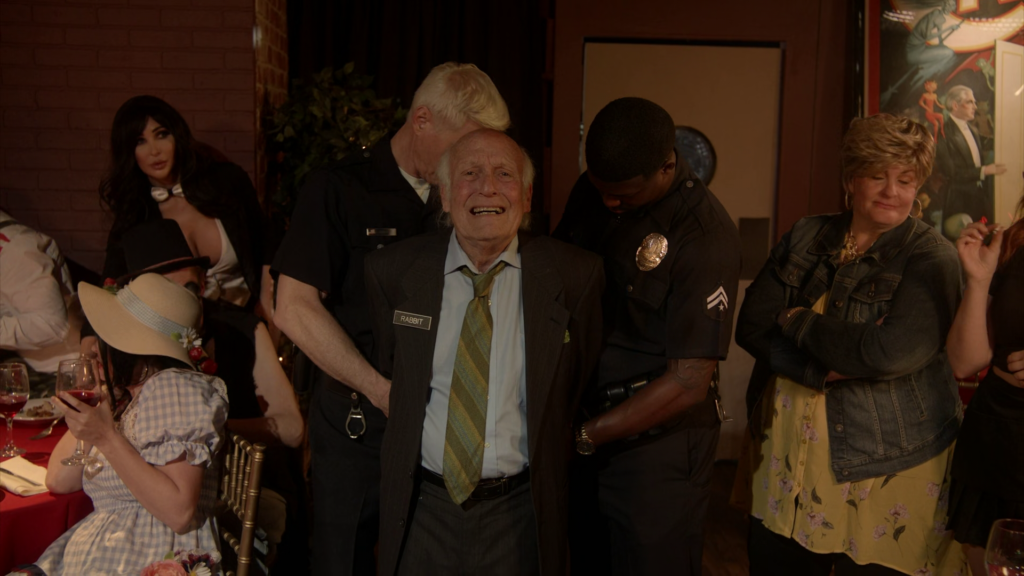
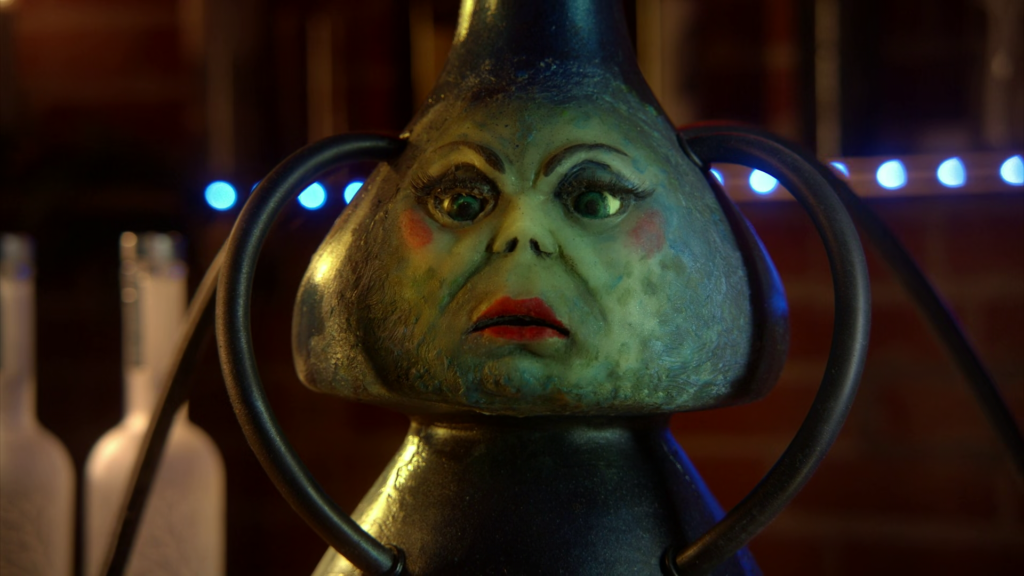
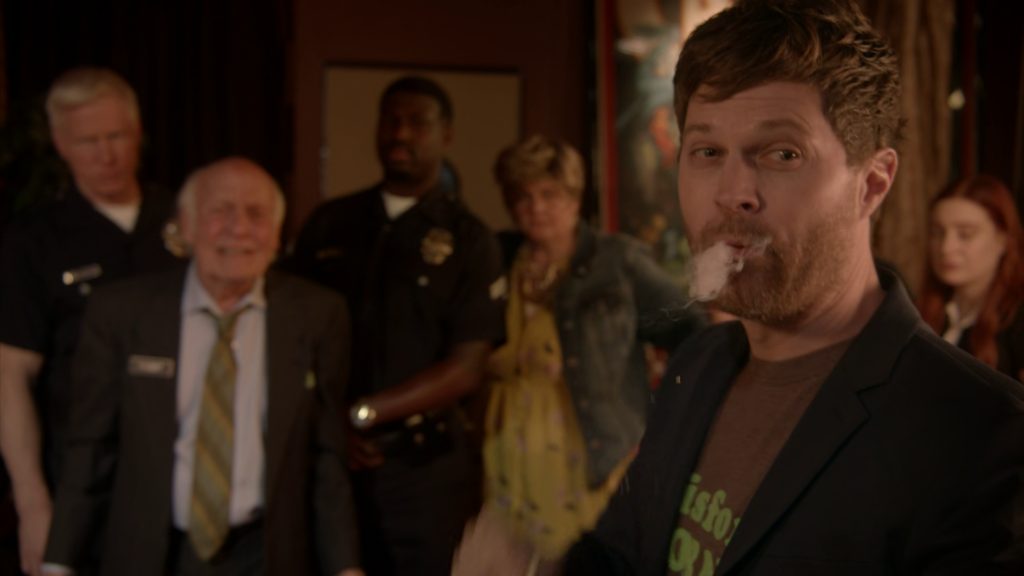
Evil Bong 888: Infinity High (2022)
Film review #529
Director: Charles Band
SYNOPSIS: Rabbit has opened up a new restaurant to try and go legit after his many weed-related adventures, with the evil bong, Ebee, working in the kitchen. However, many mishaps ensue, and tempt Rabbit to return to his old ways…
THOUGHTS/ANALYSIS: Evil Bong 888: Infinity High is a 2022 film and actually the ninth film in the Evil Bong series (if you’re counting Evil Bong vs. Gingerdead Man). The film opens up with series regular Rabbit preparing to open a new restaurant and attempting to go straight without smoking weed. Meanwhile the evil bong, Ebee, is helping out in the kitchen. If you’ve seen any of the other Evil Bong films, then you’ll know what to expect: a bunch of one-note characters come through the doors, and do their predictable humour, while the next characters come in and add to the scene. Everything that I have written about the previous Evil Bong films essentially just applies to this one: it is not a complex film, the plot is barely a plot, but the audience is people that are high and probably only aren’t going to follow any complexities, and just want to see some stupid, sexy or trippy stuff on screen. With a runtime of around an hour, at least the film does not overstay it’s welcome.
The film is, in some way, a return to basics (if you think the series ever evolved beyond “basics”), and takes out a lot of the characters and concepts that had driven the last few films, such as Lucy Furr, the Gingerdead Man, and Sexy Hell (yes, I did just write all of those things, and yes, they did happen). Although it’s unclear whether this is just because they couldn’t get any of the other actors to return; even though this hasn’t stopped them before from simply recasting a lot of roles. As such, we are left with Rabbit and Ebee, who became the only ones to appear in all the previous Evil Bong films. The “I tell you what” rednecks return doing their regular shtick, and even though they have been doing the same thing over numerous films, it’s strangely comforting to see them back doing the same thing, as it probably wouldn’t feel like an Evil Bong film without them at this point. The film also manages to bring back Larnell, one of the original characters, for the final few minutes, but he literally does nothing other than smoke a joint. The Gingerdead/Gingerweed man also make a brief cameo at the end, so there was at least some effort to acknowledge some of the other key characters of the series.
The film does try to be up to date with some it’s characters: you have a “Karen” who comes into the restaurant to complain, two teenagers who don’t know how to act in public post-Covid pandemic, and “Joe Exotic” (not actually him, in factm it doesn’t even look like him) It’s very little, and hardly biting social commentary, but it helps set the scene a little, and make the characters seem a bit more relatable (even though they are never anything more than clichés.) To balance this out as well, you also get the German chef named Sal Monella, whose personality is simply being German (you can probably imagine what that means). Again, it’s all simple stuff that doesn’t need to be anything more than what it is, but that doesn’t necessarily make it good.
Like most (all) of the Evil Bong films, the film has two sets: the restaurant, and the kitchen. Even then, quite a few of the scenes are obviously completely green-screened. It cuts back on trying to use CG and trippy special effects, and just sticks to having a laugh with the characters and tropes they have. Being as this is supposed to be the final Evil Bong film, it doesn’t really have a definitive ending or resolution, but at least it didn’t end on a cliff-hanger like Evil Bong 777 did (and which this film pretty much ignores). Overall, Evil Bong 888 is, as all of the films in this series are, crude, low budget, and without a plot. But as always, these films are meant to target an audience of people who are probably so high they are devoid of sense, so anything more complex than semi-nudity and weed jokes isn’t going to be truly appreciated. I think cutting a lot of the characters and lore it had built up helps the film in some regards by focusing on the characters that work, but it doesn’t offer anything new, or a definitive, satisfying ending to the series. I don’t think it’s the worst film in the series, as it attempts some relevant jokes, and returns some of the more memorable characters, but there’s still plenty of dull moments and flat jokes that would remain flat no matter how high you are. If you are familiar with Full Moon’s low budget films, you’ll recognise this as more of what they do, but if you’re expecting something entertaining that delivers something truly unique with its concept, you’ll be sorely disappointed: that ship sailed long ago.
-
#528 – The Three Fantastic Supermen (1967)
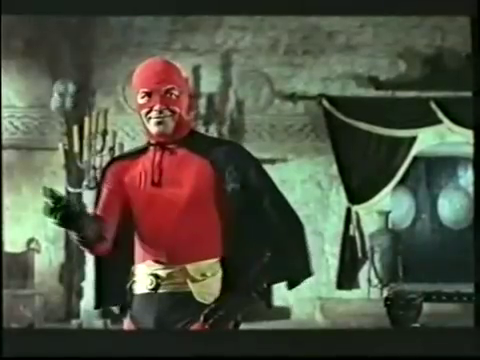
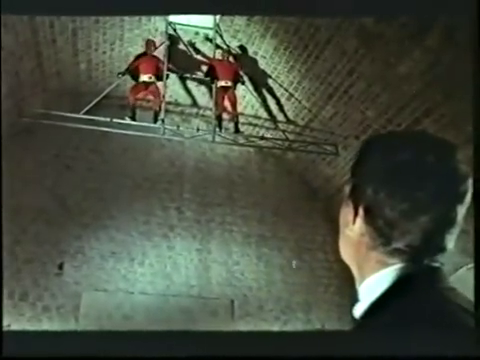
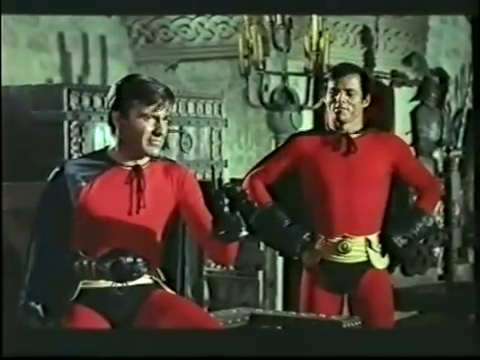
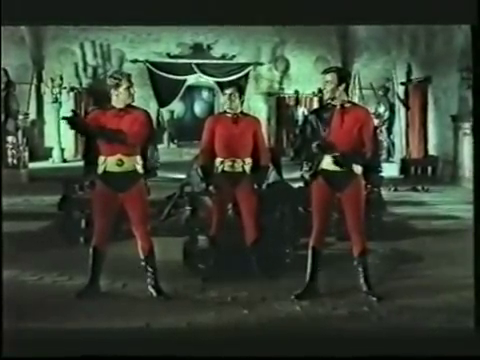
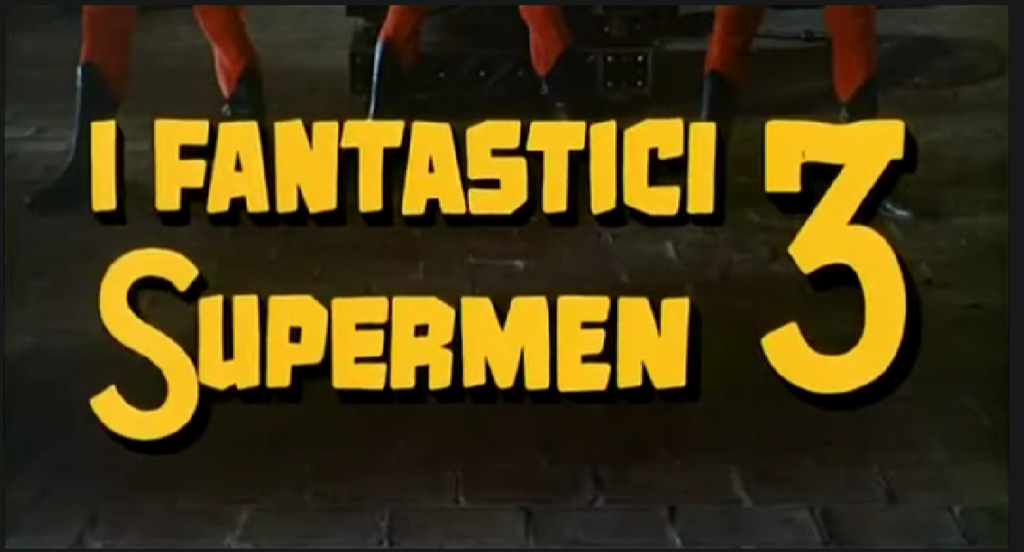
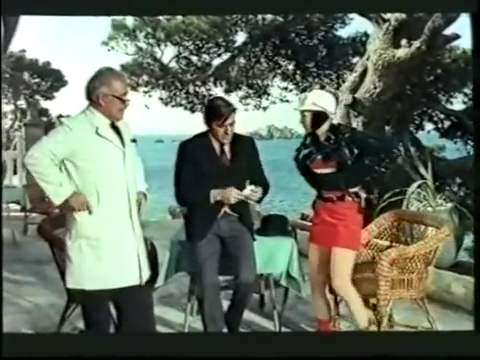
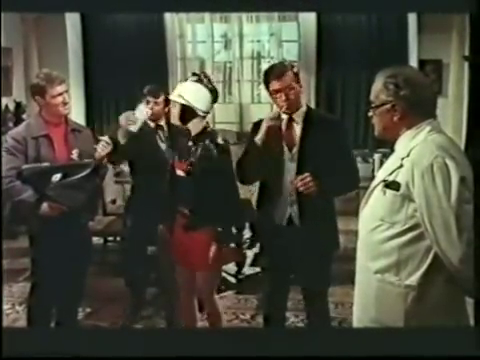
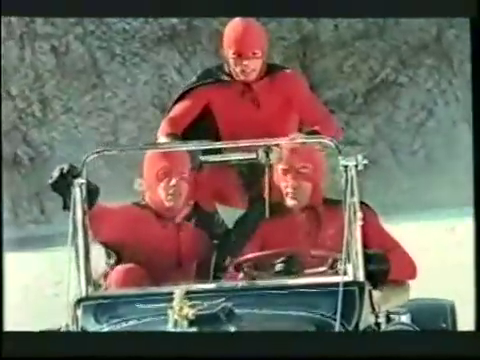
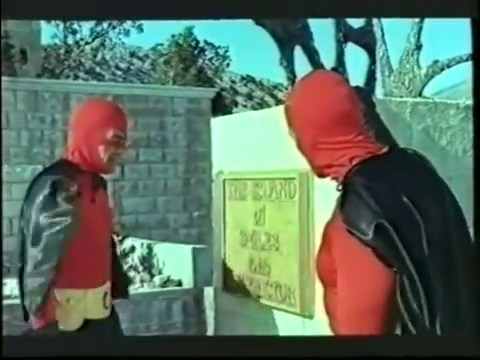
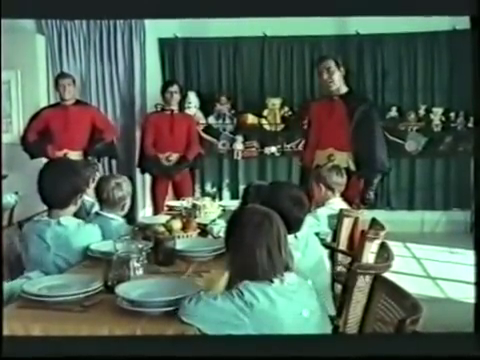
The Three Fantastic Supermen (1967)
Film review # 528
Director: Gianfranco Parolini
SYNOPSIS: FBI agent Brad hires two “supermen” who fight crime in their bullet-proof suits. The three of them join forces to become the “three fantastic supermen,” to investigate an evil plot concerning counterfeit money and bad guys turning people into precious jewels…
THOUGHTS/ANALYSIS: The Three Fantastic Supermen is a 1967 film. The film opens up with FBI agent Brad testing two superhero crimefighters, Tony and Nick, to see if they are up to joining forces. The two pass the test, and the three work together to investigate a counterfeit money ring and an evil scheme. The film is very much one of the many, many comedy spy films that parody the likes of James Bond-style films, and were especially in abundance in Italy at the time. It also has this superhero element too, with the characters dressing in skin-tight spandex and capes that serve as “bullet-proof suits.” The plot of the film is pretty standard for a spy film parody, but it at least has direction and some twists, with the somewhat uneasy alliance between the FBI and the two vigilante heroes leading to some conflict between them. The main aspect of the film is the comedy though, so everything is done in a silly, slapstick way. Any sense of peril is faced by Tony’s cheeky smile, and Nick’s expressive facial expressions and motion (accentuated by the fact he is mute). Things get even more silly when a machine that turns people into precious jewels gets introduced, as well as the machine eventually being able to clone people, but it also gets a bit sinister, when a class of schoolkids are kidnapped and nearly killed (the cloning machine works properly on children, but not adults apparently). Regardless, it’s a standard bit of comedy and parody, with plenty of scantily-clad women and chauvinism to appeal to its young male target audience.
The three main characters, Tony, Brad and Nick are different enough to make them distinguishable and interesting: as mentioned, Brad is the straight-laced FBI agent who has an uneasy alliance with the other two, although this typically ends with them playing practical jokes on him as he tries to get their secrets from them. Tony is the suave cheeky chap who laughs off any threats, and Nick as the expressive mute gives the scenes a different kind of energy. The supporting cast is a fairly typical bunch, with the evil criminal mastermind, the scientist, and his attractive daughter who serves as the love interest, so it’s unremarkable, but it has the staples of the films it is attempting to parody. The three “fantastic supermen” are also played by trained acrobats, so they can pull off some good stunts and performances, which again give the scenes a unique energy and appeal. There’s also plenty of props and variety in the scenes to make it feel busy and engaging, so while it’s a bit low budget and all over the place, it is still entertaining, although the music consisting of one of about three pieces of music played every other minute does get annoying quite fast. Overall though, The Three Fantastic Supermen is a very typical spy comedy of the time, with the added superhero element adding in a bit of a twist, and the acrobatics giving the stunts a bit more energy. It’s nothing too special or memorable, but it was apparently successful enough to warrant a number of sequels, which we will have to look at at some point…
-
#527 – A Nymphoid Barbarian in Dinosaur Hell (1990)

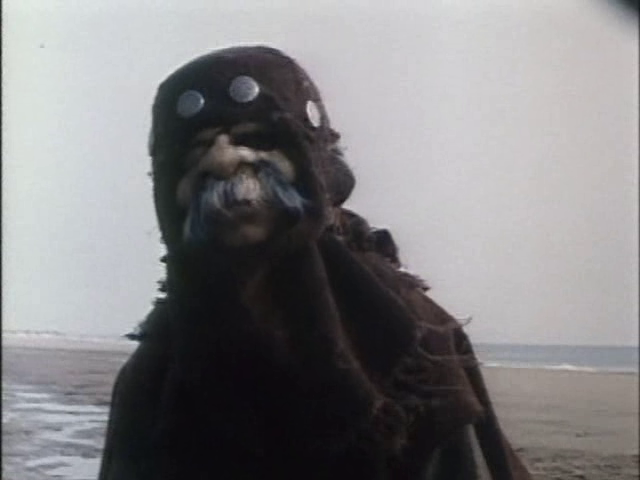
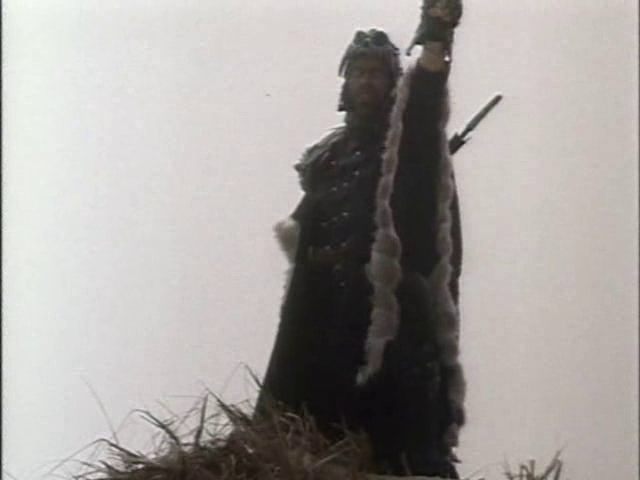
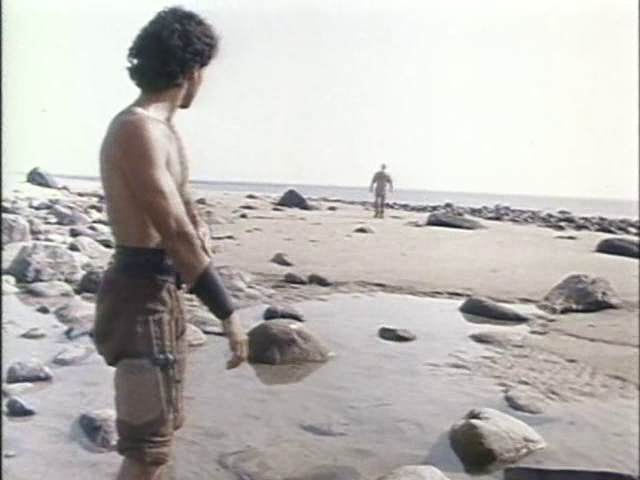

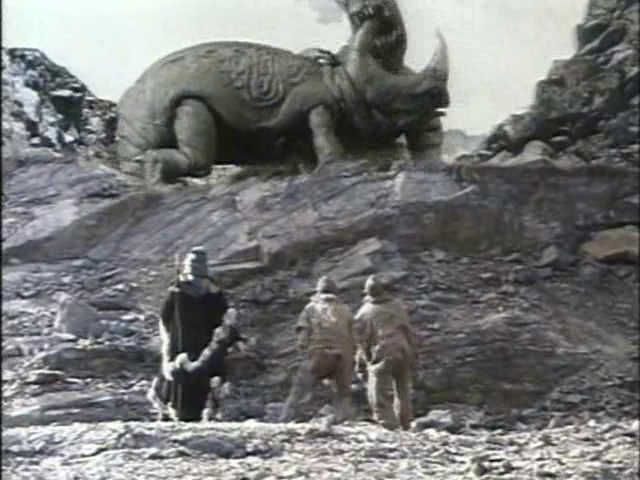
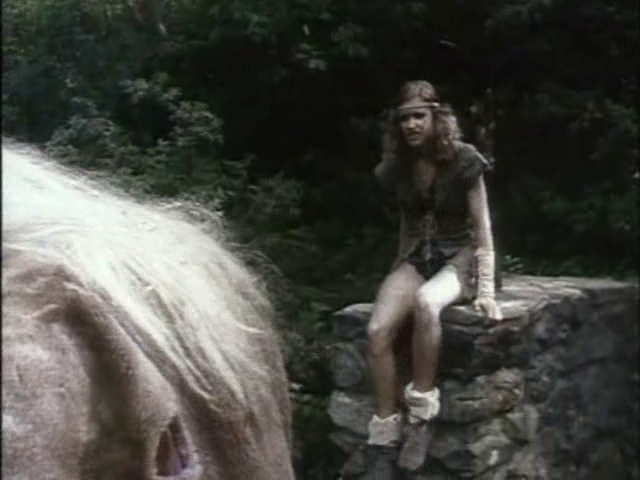
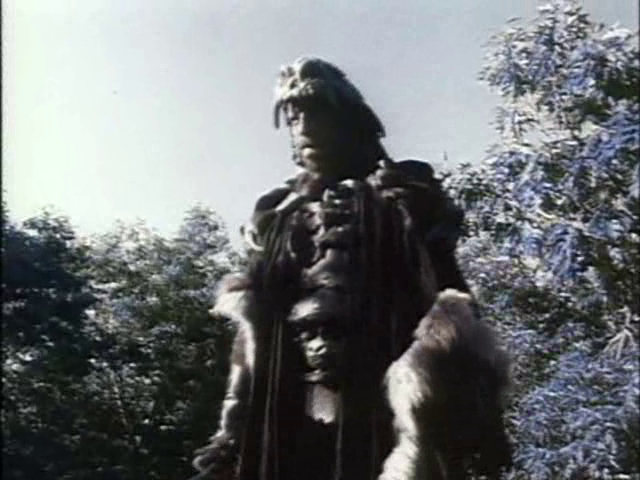
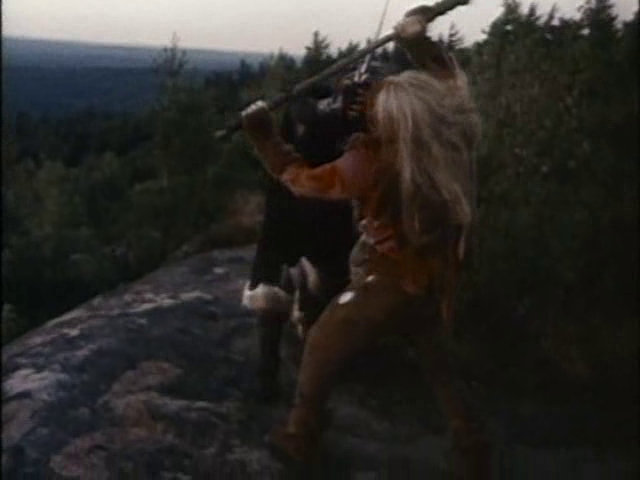
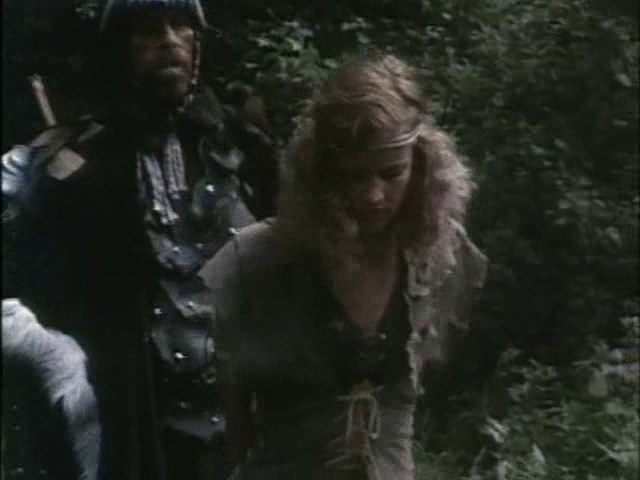
A Nymphoid Barbarian in Dinosaur Hell (1990)
Film review #527
Director: Brett Piper
SYNOPSIS: In a post-apocalyptic Earth, a young woman has to survive in a world infested with dinosaurs, mutants, and barbarians.
THOUGHTS/ANALYSIS: A Nymphoid Barbarian in Dinosaur Hell is a 1990 post-apocalyptic sci-fi film. The film opens up the same way as nearly every post-apocalyptic film does: with a montage of the world being essentially destroyed by nuclear war. What is left is a world filled with dinosaurs, mutants, lizard people…just a mish-mash of any and all typical things you’d find in other films. There’s not much rhyme or reason to the setting. The plot is…basically non-existent: there’s hardly any dialogue, any motivation, or any direction. With post-apocalyptic films you can definitely make the lack of dialogue or story work: in a world where society has collapsed, sometimes the only goal is to survive, and films like Mad Max 2, which also uses minimal dialogue and focuses on action, works extremely well. Here, that is not the case, as the action is sub-par and without any spectacle. The film just consists of some wandering about and scrappy fights, with a few stop-motion monsters as well. There’s no sense of character, world or development to maintain interest, and it certainly doesn’t live up to the hyped up title, which is probably the only reason anyone would be drawn to this film.
But we shouldn’t perhaps be so disparaging about the film because it was made by the company Troma; who are known for making low-budget sci-fi horror films that rely on comedy and satire to make fun of the genre. Even by Troma’s standards though, this is bad. This film just doesn’t have any amount of self-awareness or satire that would make you think it is poking fun at the genre: it’s just dull, and the lack of any substance means you really have no idea what to take from it. The title promises much, but delivers very little: there’s not really any dinosaurs, the barbarian isn’t a nymphoid (in fact nymphoid isn’t a word), and you’re not missing out on anything if you skip this film.
-
#526 – Sonic the Hedgehog (2022)


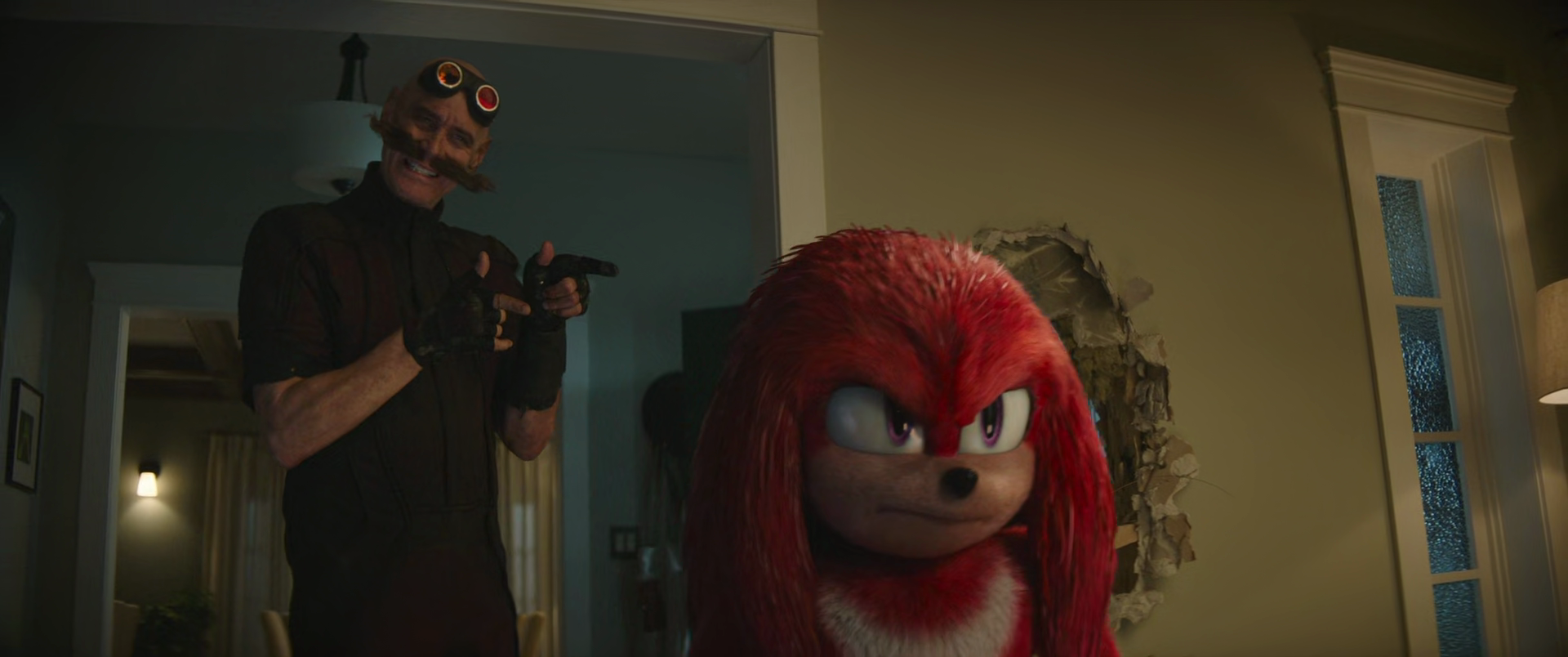

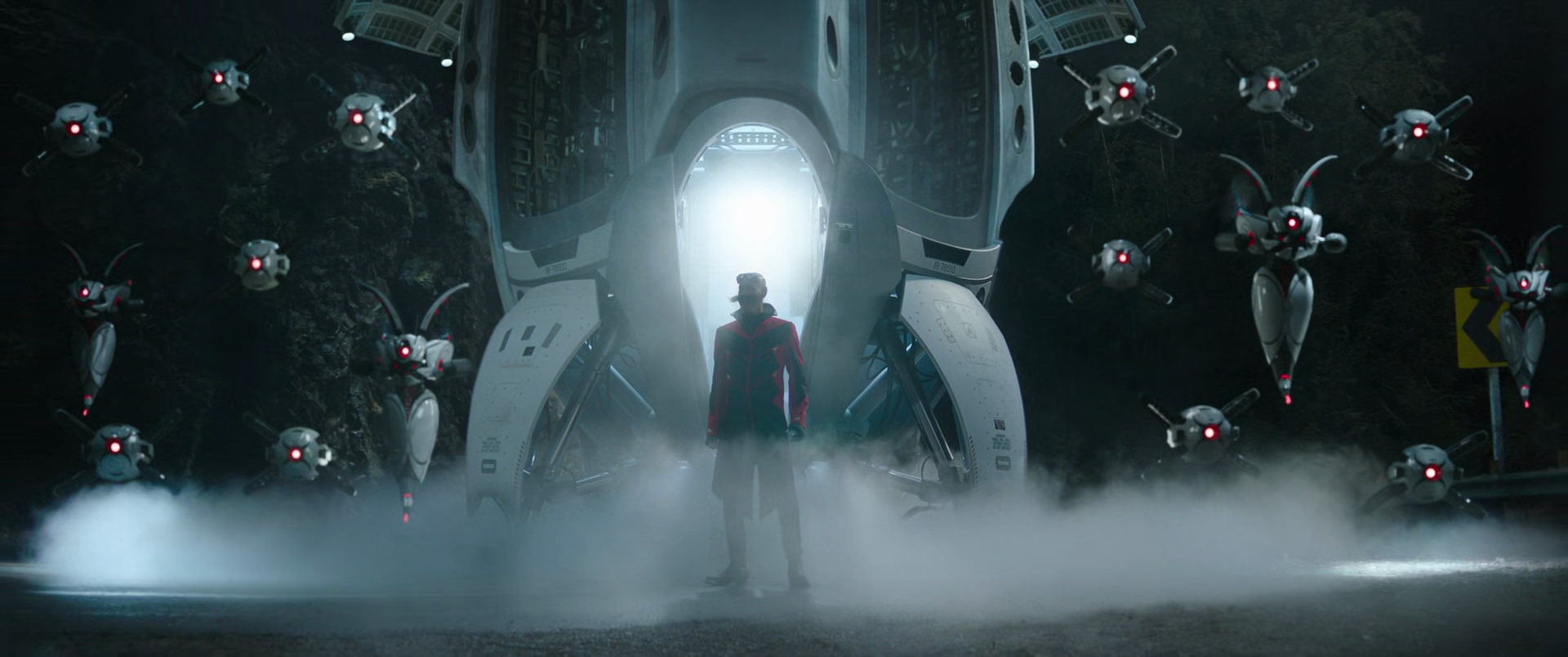
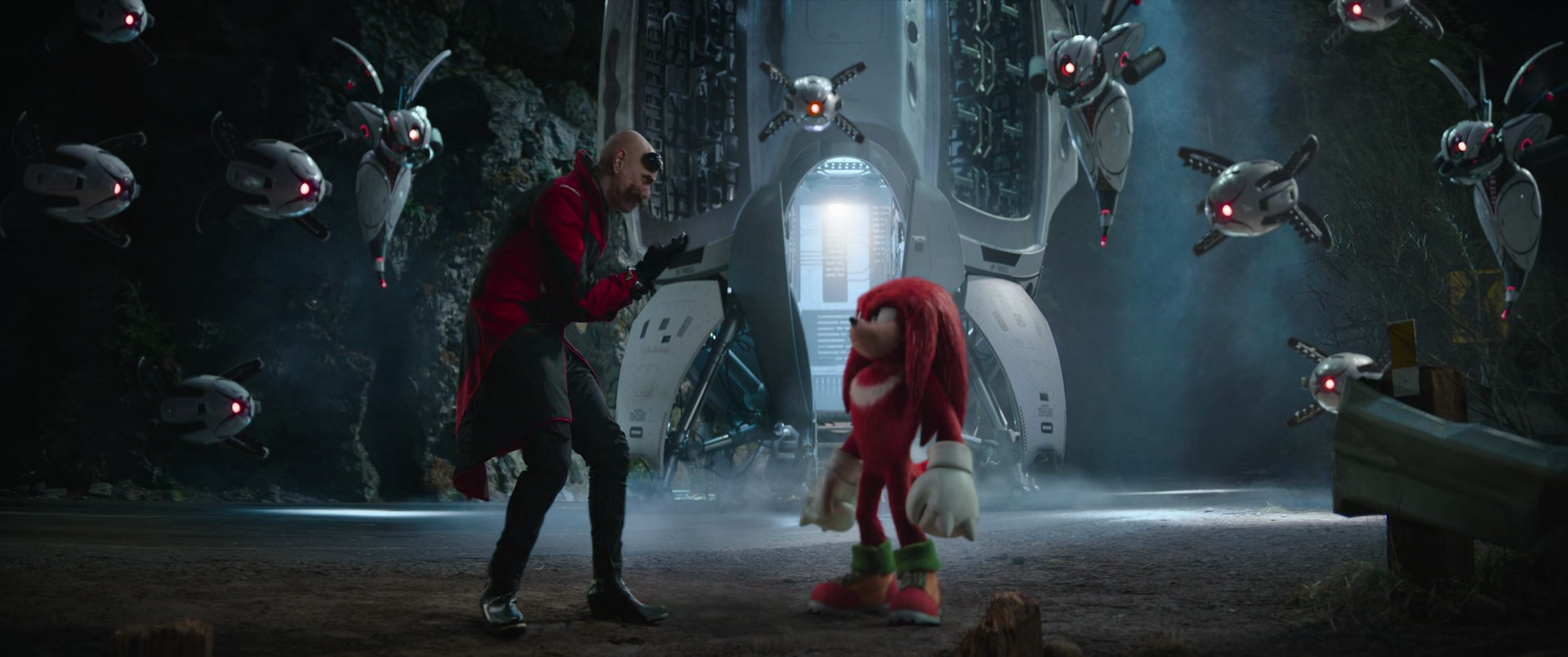
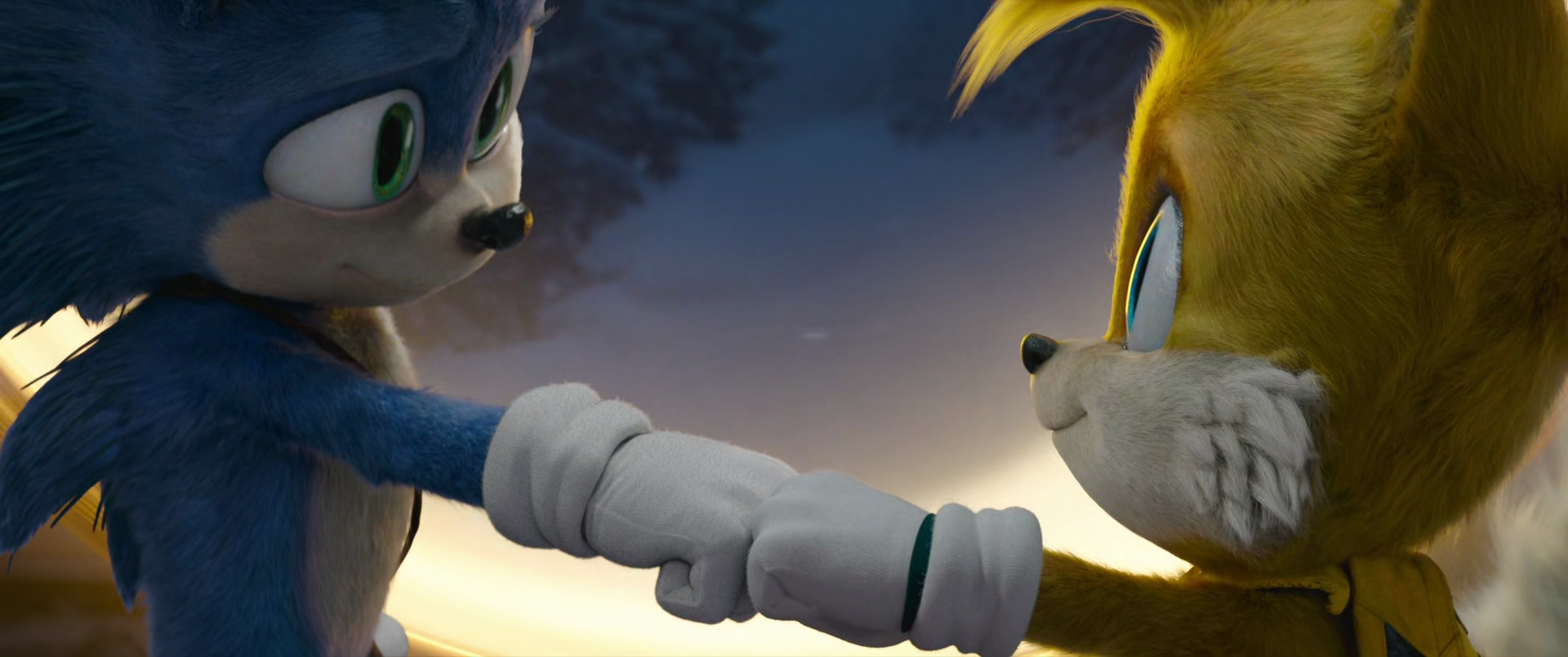
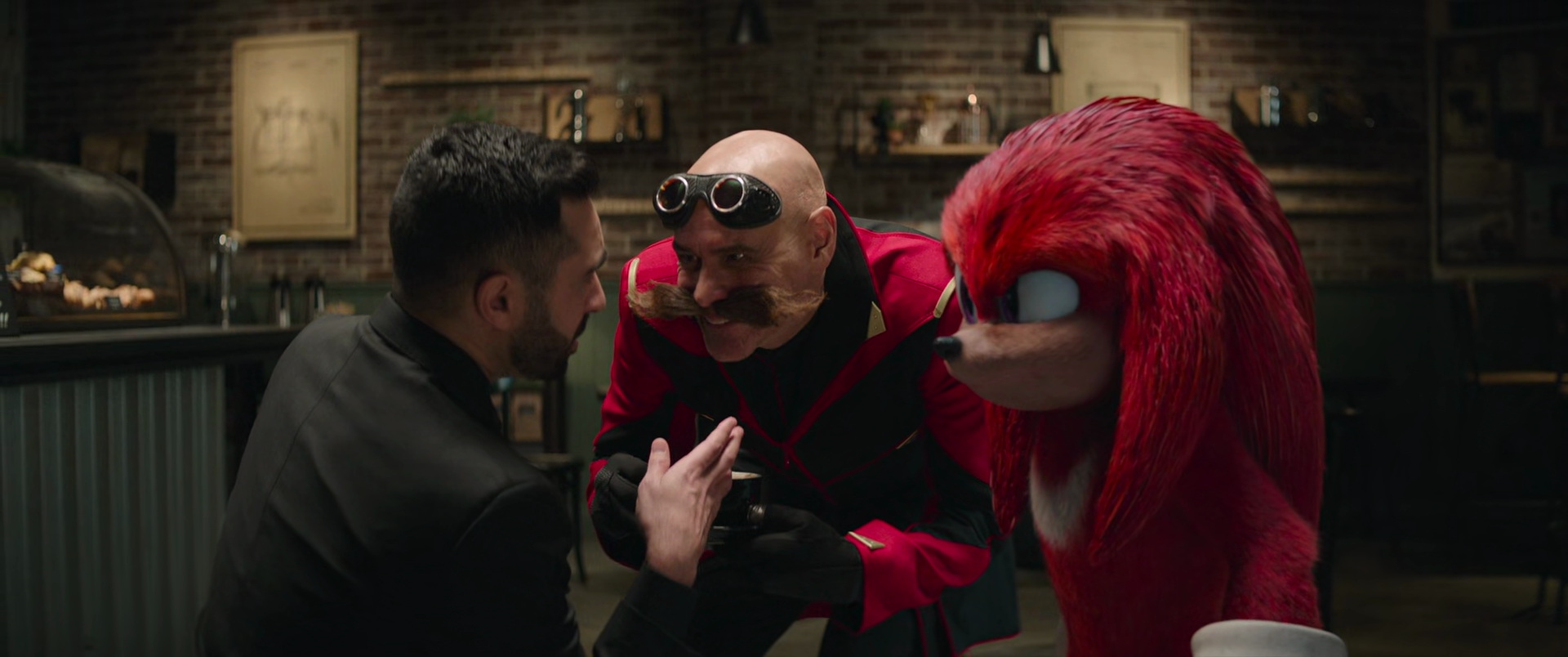
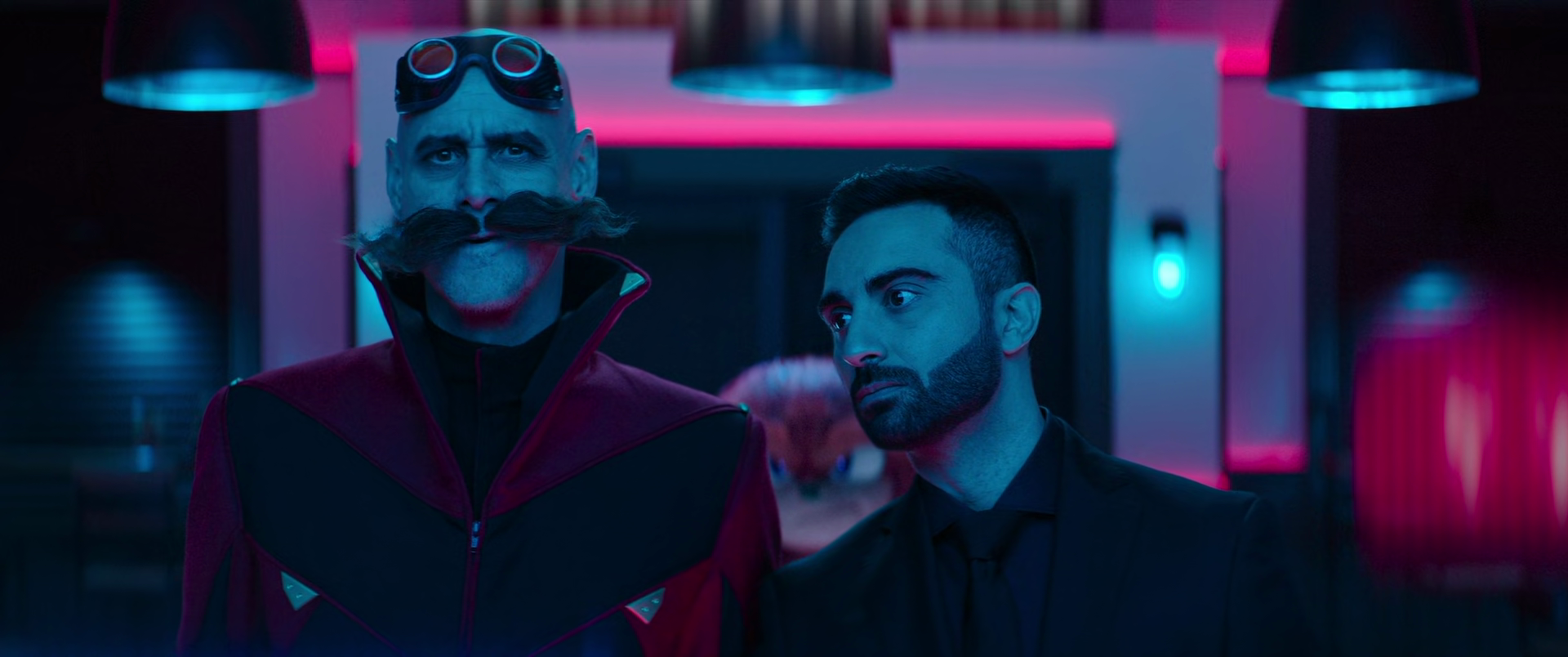

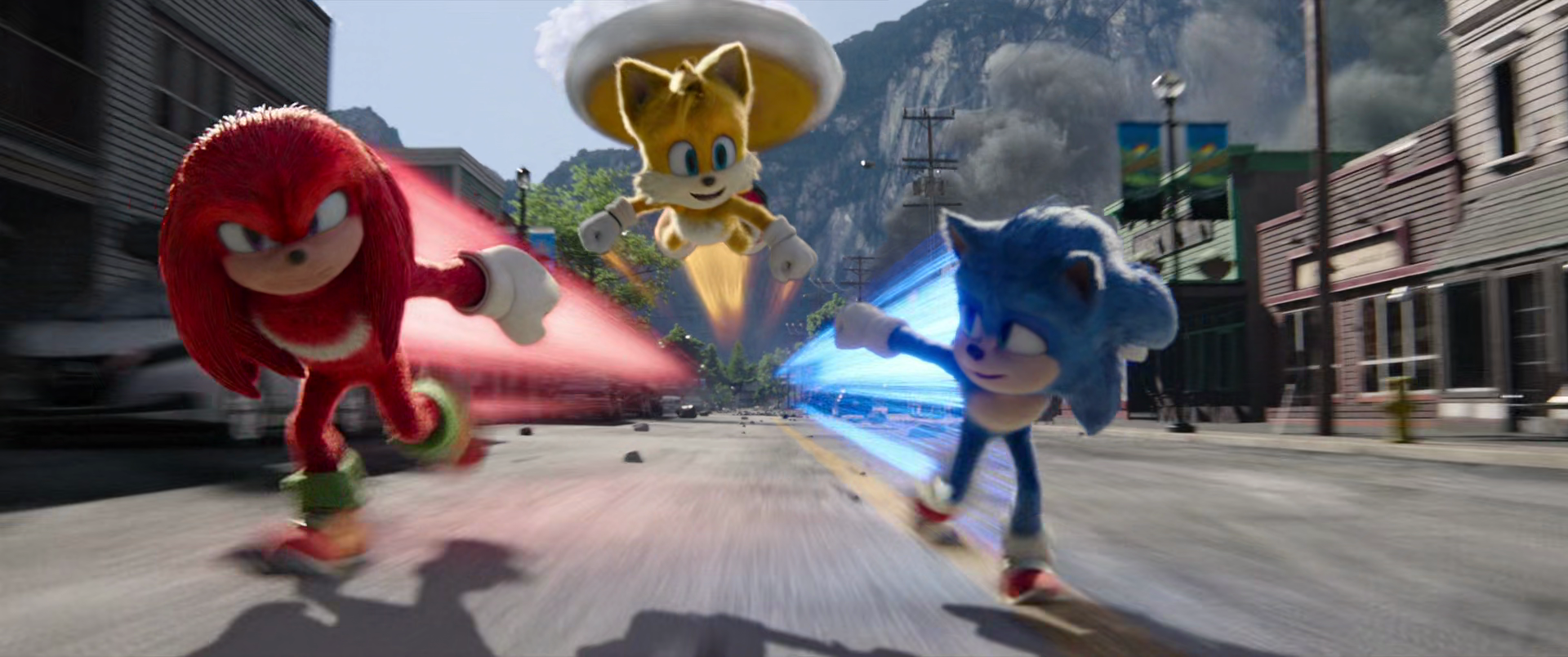
Sonic the Hedgehog 2 (2022)
Film review #526
Director: Jeff Fowler
SYNOPSIS: While Sonic the hedgehog struggles to be a hero on Earth, his nemesis Dr. Robotnik is making plans to return to Earth, helped by the mighty Knuckles the Echidna. Meanwhile, Sonic manages to get some help from Tails, a new friend who comes to warn Sonic of Robotnik’s return, and his quest to find the master emerald…
THOUGHTS/ANALYSIS: Sonic the Hedgehog 2 is a 2022 film, and the sequel to the 2020 film Sonic the Hedgehog. The film starts off with Sonic trying to use his powers for the best, and struggling to fit into the role of a hero. Meanwhile, Dr. Robotnik is trapped on a planet of mushrooms, looking for a way to get back to Earth and get his revenge. The story feels like one you would typically see in a sequel, with the characters being given new problems to overcome, and some attempt to develop their characters. It feels very similar to the first film, but that’s not necessarily a bad thing, as the first one was decent: nothing spectacular, but decent for its young target audience. However, I think the script could have done with another re-write or revision: the whole thing doesn’t really stick together very well, and the scenes feel disjointed, alongside the main plotline of the film getting lost through the mish-mash of scenes. The film does at least focuses on Sonic and his friends for most of it, and the story elements of the human characters is diminished, but this is what you want really. This also has the effect of having their story more self-contained and easier to follow than what Sonic and his friends are doing. At a runtime of two hours, the film could probably have been cut down easily by about fifteen to twenty minutes, and that is probably something that would have been achieved with another script re-write.
All of the characters from the original return, and have their own things to do. The introduction of Knuckles is a stand-out point, with Idris Elba voice the character and really making it his own. Probably the funniest moments in the film come from Knuckles and his over-serious nature. Jim Carrey brings the energy as Dr. Robotnik again, and Agent Stone is a good lackey for him. The introduction of Tails is a bit wobbly, and always feels like any explanation or development of his character is off-hand and implied. I think there should definitely have been more of a balance between the introduction of both Tails and Knuckles to properly flesh out both characters.
Overall, Sonic the Hedgehog 2 is a sequel that continues the work of its sequel without too much fanfare: it carries on the bits which worked and improves on them to some degree, while focusing less on the human characters (but even their scenes feel a bit more focused, even if they’re mostly just for the sake of comedy). It’s still aimed at a younger target audience, but it can still get a few laughs, especially when it relies on good old-fashioned comedy rather than making awkward references (although I’m sure the target audience will enjoy them still). There’s definitely some issues with the story not flowing and coming together, the long runtime, and the story of some characters not being integrated fully into the story, and as mentioned, I think most of these issues could have been addressed with another script re-write or revision. Nevertheless, its still an entertaining film for its target audience, and fits nicely alongside the first film.
-
#525 – The Flight that Disappeared (1961)
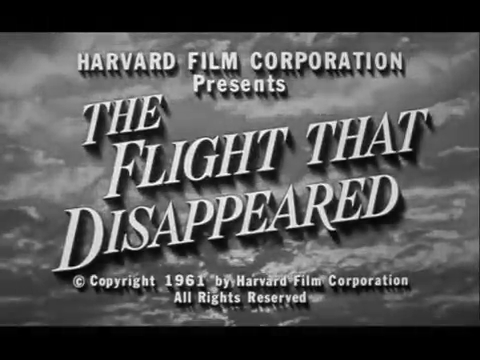
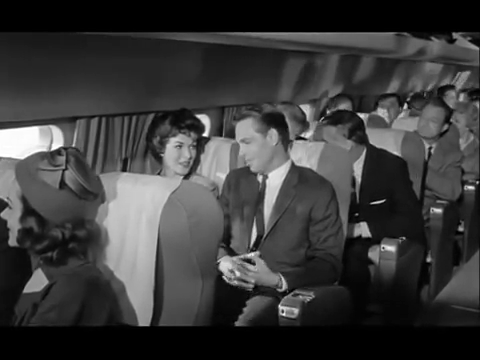
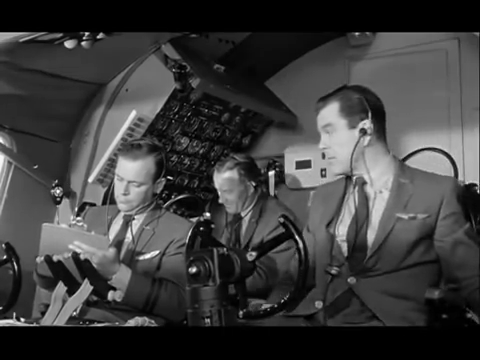
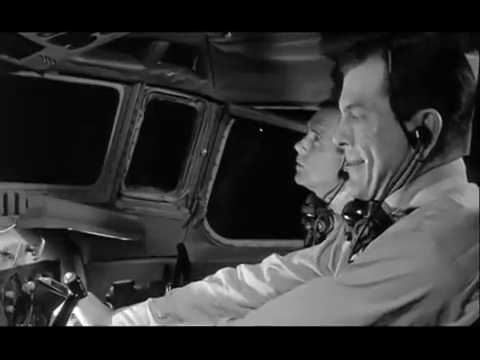
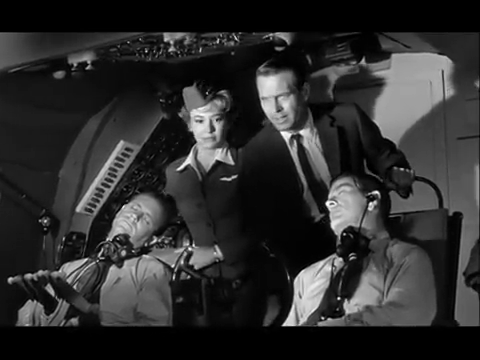
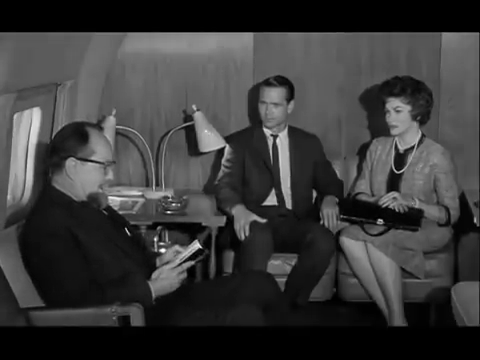
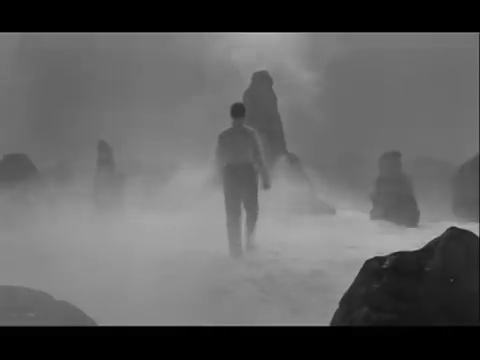
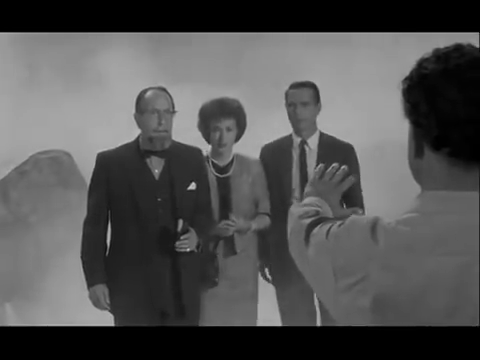
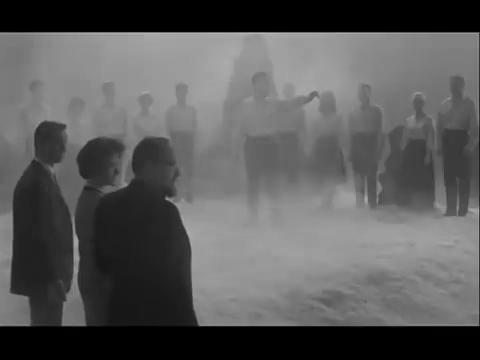
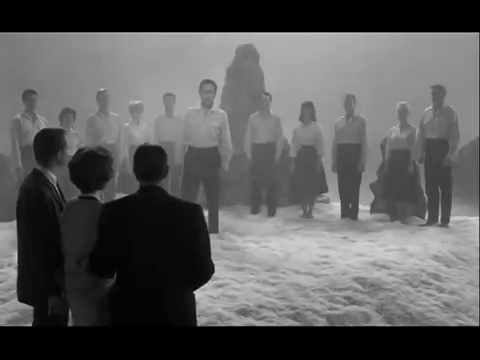
The Flight that Disappeared (1961)
Film review #525
Director: Reginald LeBorg
SYNOPSIS: A commercial flight to Washington D.C. starts to gain altitude uncontrollably, eventually losing contact with the ground. Among the passengers are three top scientists, who have been summoned to the Pentagon for a meeting, and eventually the only ones who are left conscious as the aircraft continues to ascend…
THOUGHTS/ANALYSIS: The Flight that Disappeared is a 1961 film. The plot concerns a commercial flight to Washington D.C. that continues to gain altitude as the pilots lose control and radio contact with the surface ceases. The build-up of the mystery is fairly interesting, and it certainly makes you wonder where it is all going: there’s no evidence of any sci-fi or extraordinary influences, so it does keep you guessing as to what is actually happening. The cast is introduced with enough detail to set the scene well, although what turn out to be the three main characters, the scientists, Dr. Carl Morris, Tom Endicott, and Marcia Paxton, aren’t very apparent until a good portion of the film, which again helps with the mystery, but also leaves the film a bit directionless. The three main characters are unknown to each other when they board, but learn that they are all there for the same reason: to attend a secret meeting at the Pentagon for the development of a new “beta bomb,” a weapon more powerful than the atom bomb. There’s a passenger on the plane who tries to talk to them individually, saying that they must use their weapon on enemy countries with a pre-emptive strike, but the scientists are insistent that it is a weapon to only be used in self-defense or retaliation. The plot, as you can probably tell, is rooted firmly in cold war era politics, although it doesn’t contribute to the mystery too much. While the film does a lot to set up the scene and the people aboard the flight, it is let down by the fact that there’s barely any personality between them, and nothing really happens in the first part of the film.
It turns out the three scientists have been summoned to a trial of sorts by the people of the future who have yet to be born, and probably will never be, if their weapon is allowed to be built and used. The film quickly jumps here from nothing happening, to a bit too much happening: we’re not given any set up for this whole trial and having to face people from the future, and it is all a bit sudden. I feel like the message gets increasingly muddled as well in this part, as the future not born people (whatever we are calling them…) accuse the scientists of being guilty because they conceived the idea of these weapons, and despite opposing their use in anything other than self defense. Is the film’s message essentially seems to be that having a bad idea makes you guilty, whereas the person or politician that uses it is simply a bureaucrat following orders and ticking boxes. There’s something about the whole message here that seems a bit off. I appreciate that the film does look at the moral quandaries it raises with a good amount of depth, but the overall conclusion just seems a bit weird; holding oneself morally accountable to people that have not or may never be born just seems a bit misguided to me.
Despite the film being an independent production, it is made quite well: the airplane where most of the film is set is a set, but it is pretty convincing and accurate. Overall, The Flight that Disappeared has an interesting mystery, but is bogged down by dull characters, and slow pacing at the beginning. The resolution and messaging is also muddled, but it does at least explore it’s subject in some depth. It probably would have been at home as an episode of The Twilight Zone, and certainly fits that tradition of 60′s science-fiction.
-
#524 – The Fort (1979)
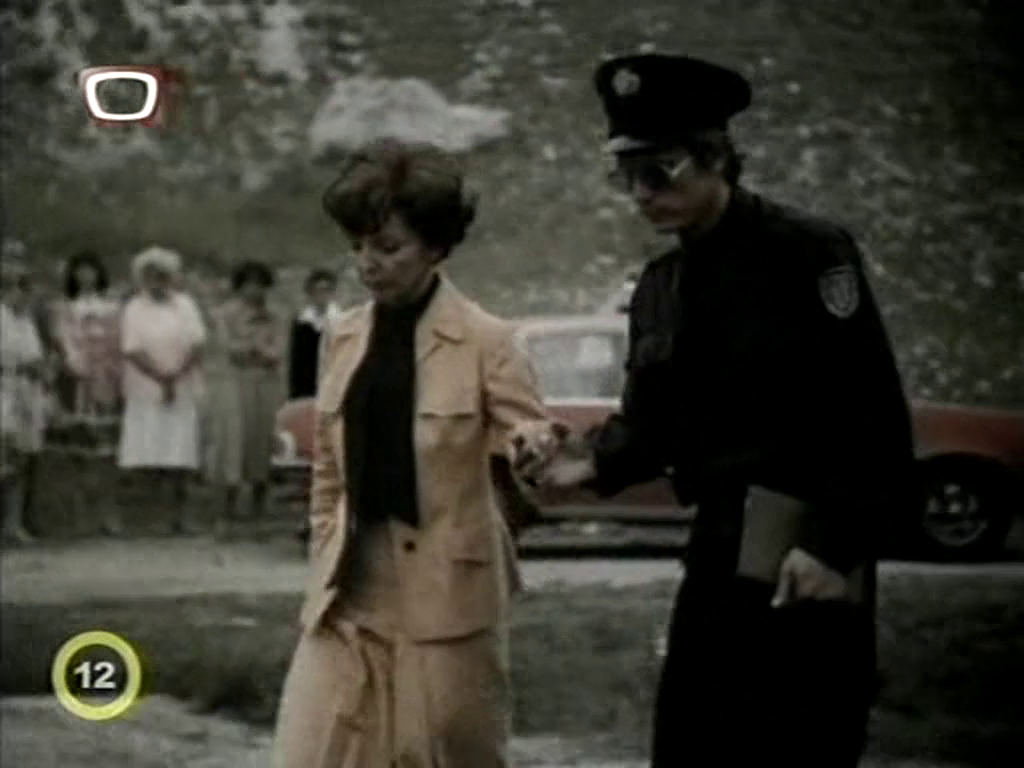
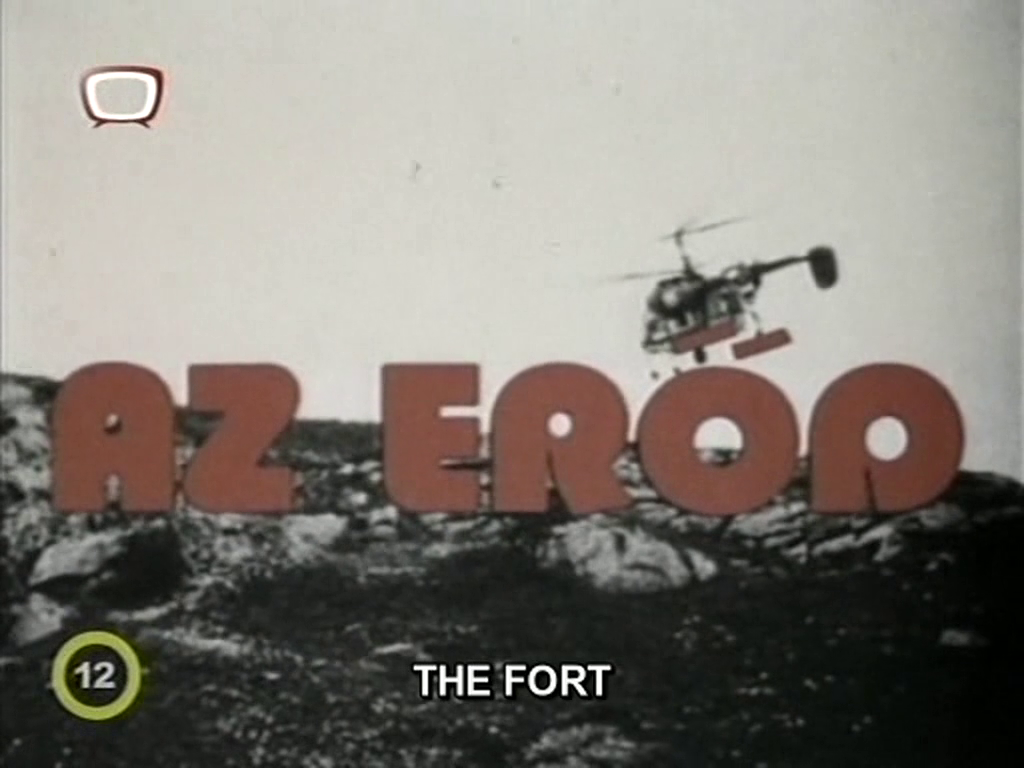
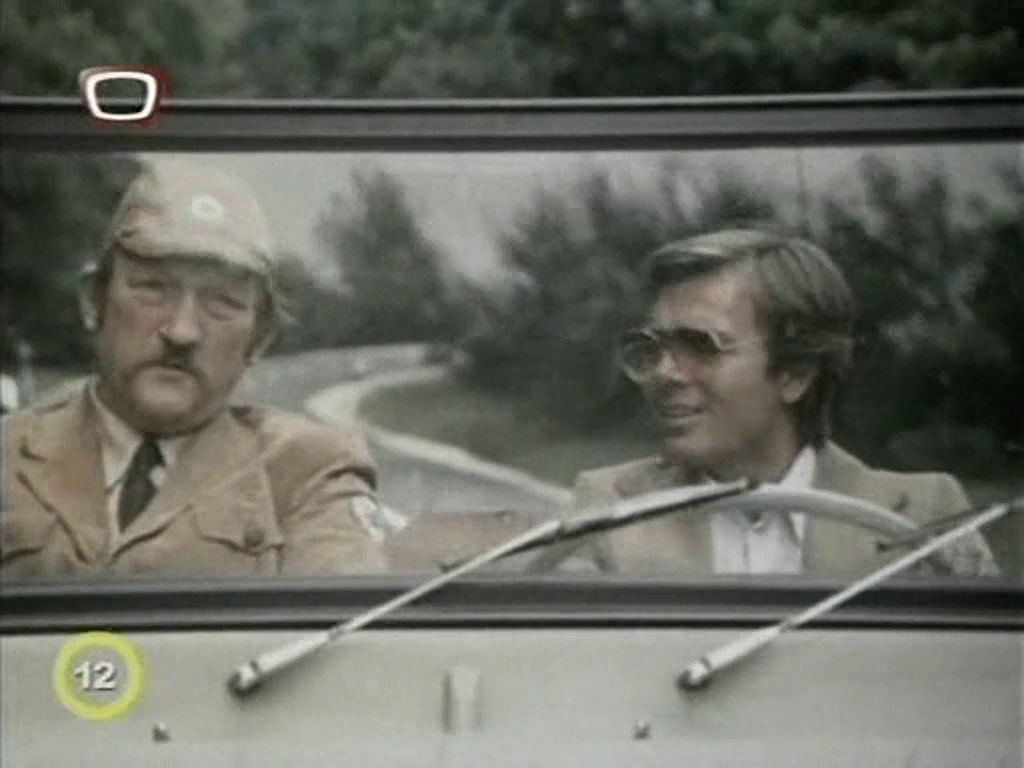
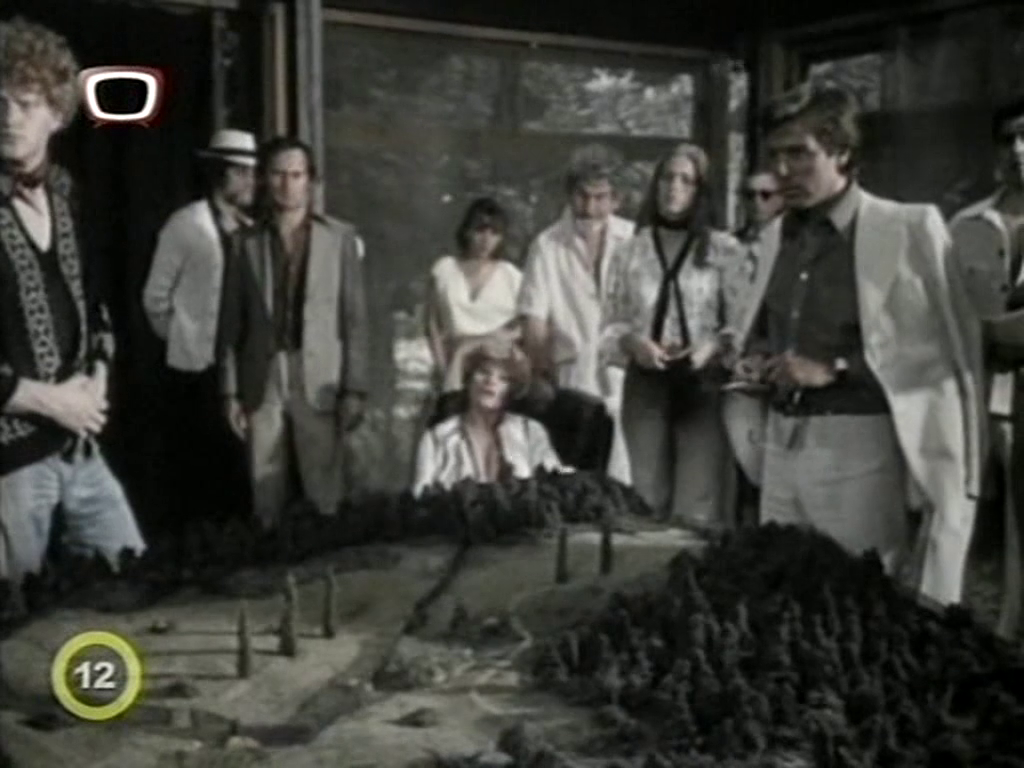
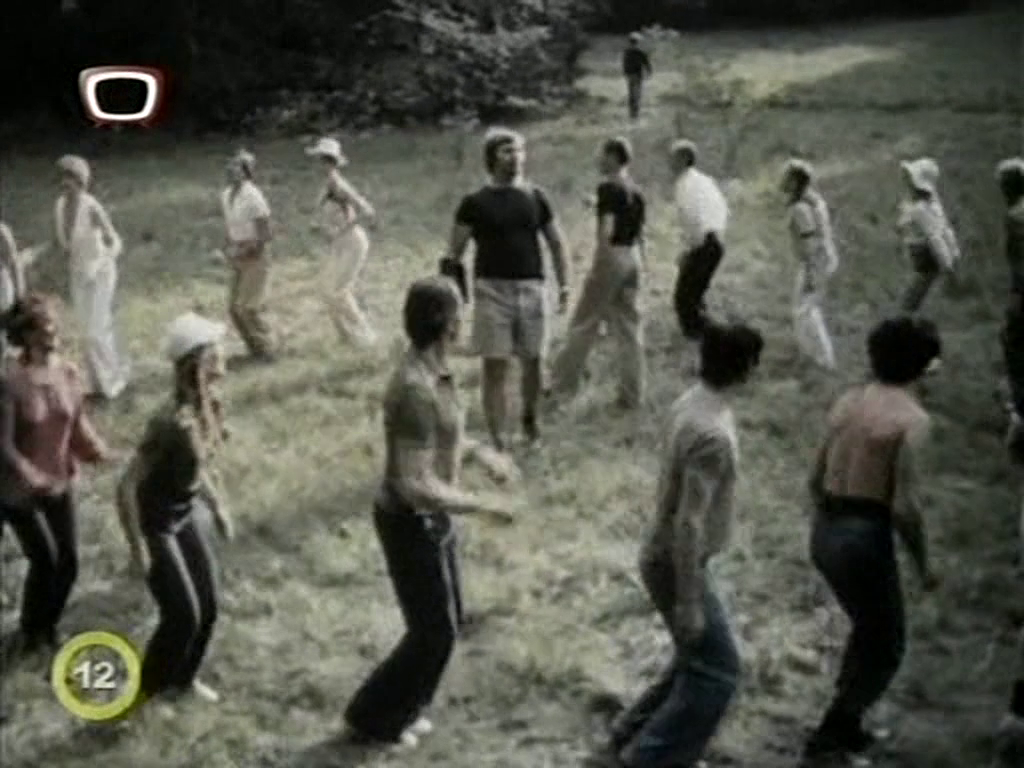
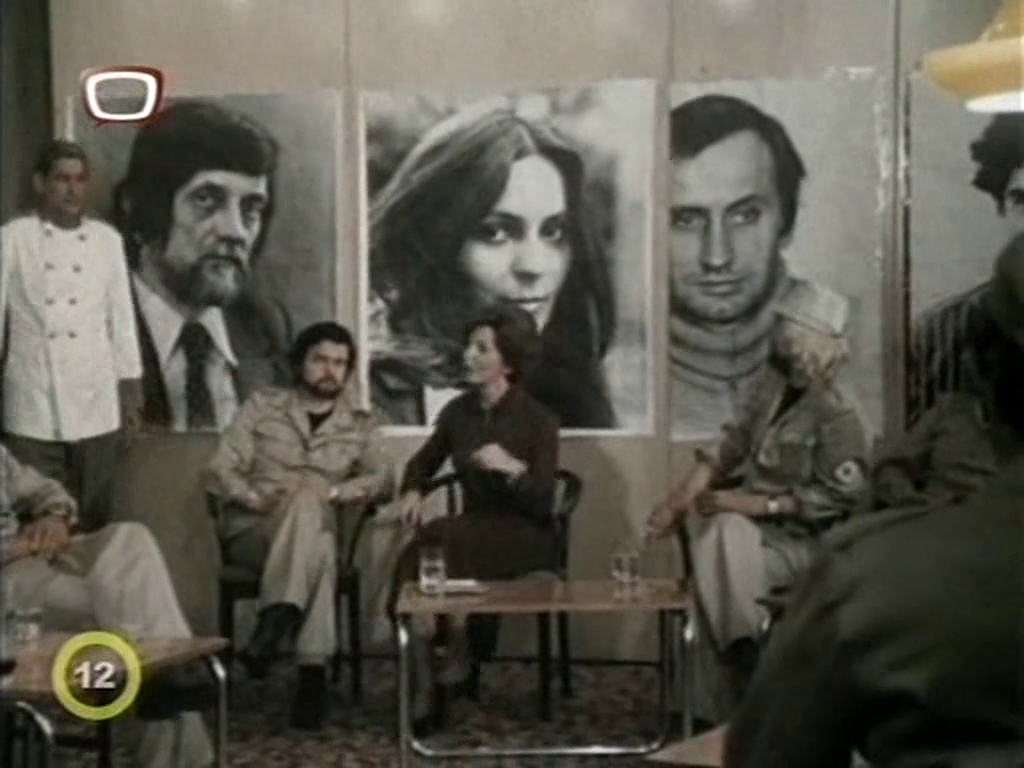
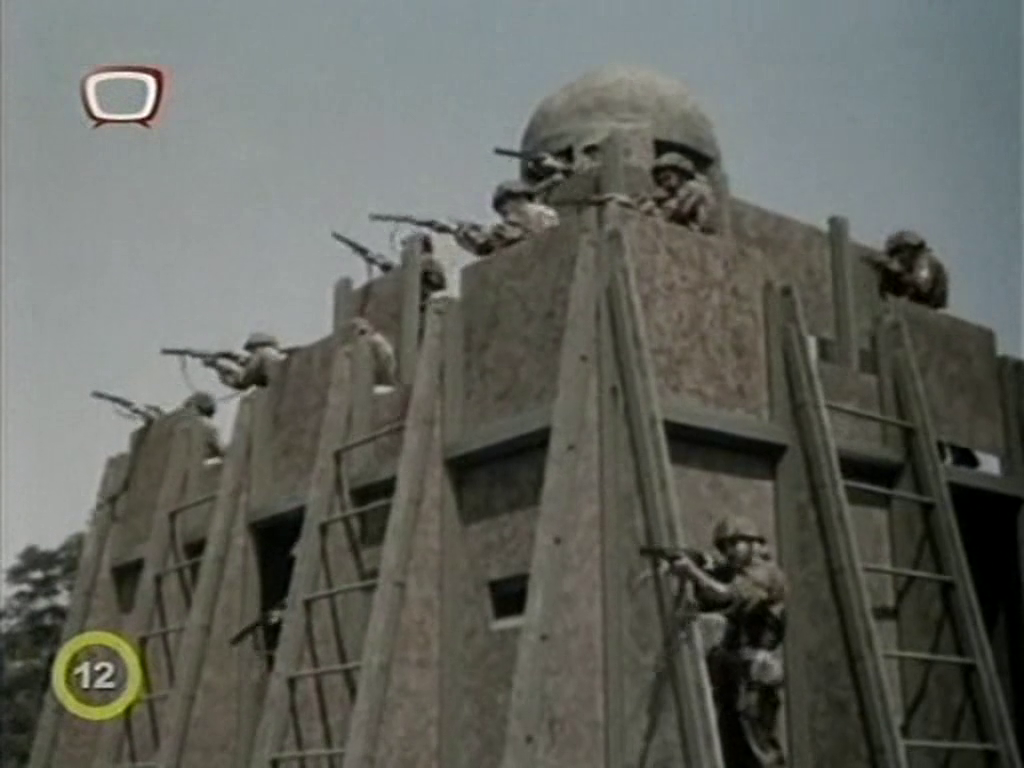
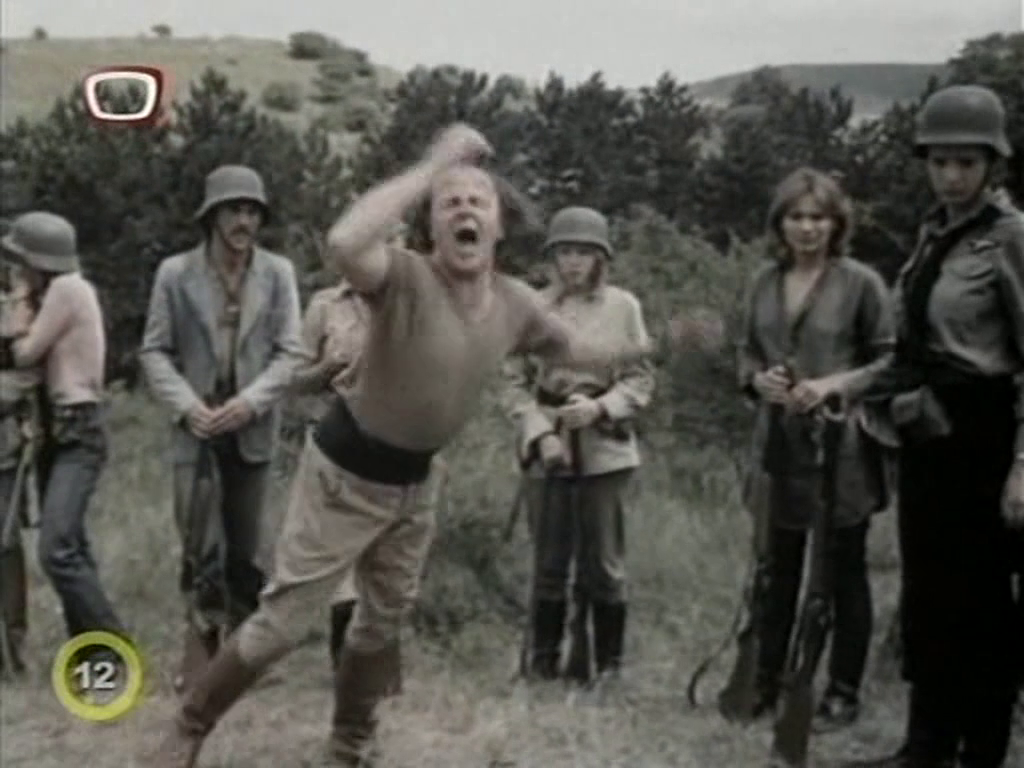
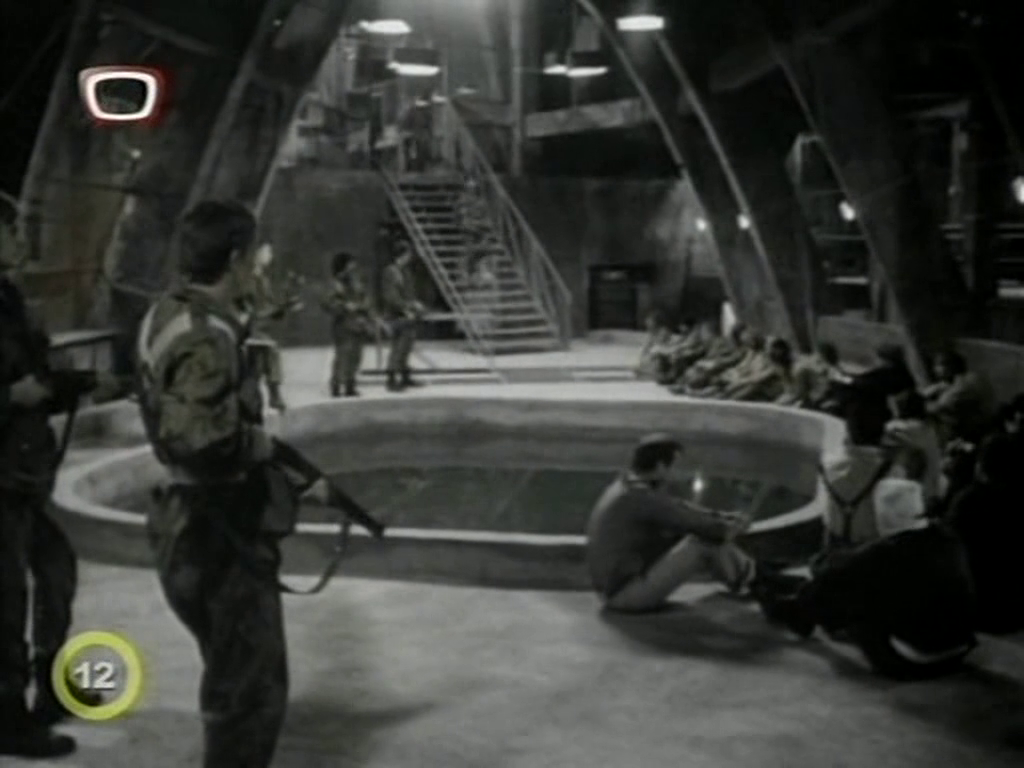
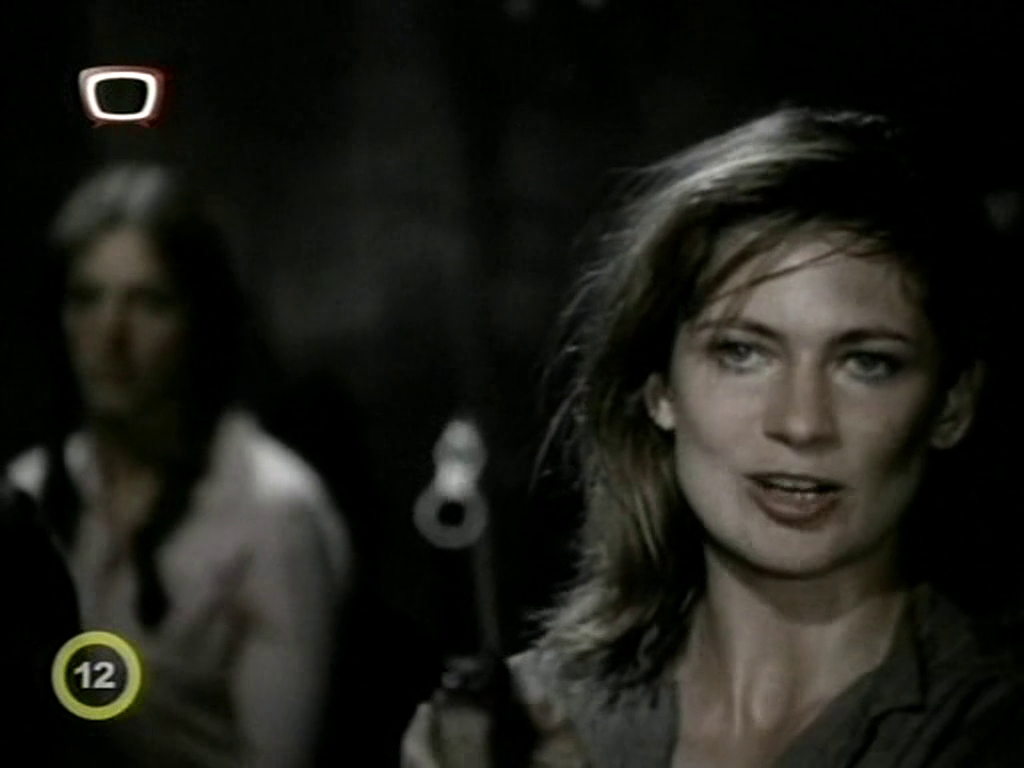
The Fort (1979)
Film review #524
Director: Miklós Szinetár
SYNOPSIS: A company that renovates old military forts sets up a secret side hustle for bored, wealthy people: they can pay to take part in a military game where they get forty-eight hours to attack and besiege a fort defended by mercenaries. What they don’t realise is that the game actually uses real bullets, and when people start to die, the wealthy tourists must find a way to survive as the war gets a bit too real…
THOUGHTS/ANALYSIS: The Fort (Az Erőd) is a 1979 Hungarian film based on the novel of the same name. The film is set in the near future, where a company posing as a renovators of old military forts has set up special war games that bored, wealthy people can participate in. The game gives the “customers” forty-eight hours to attack and conquer a military fort occupied by armed mercenaries. When these wealthy people realise that the game is real and that they can actually die, they must start to take it seriously. The film pitches itself as a dark comedy and satire, highlighting the absurdity of war, and how people romanticise or it if they’ve never been involved, or miss it if they have. The story sets up it’s premise very well, and explains the rules of the game, as well as negating any exploits or plotholes that the viewer might think of. The film is set in a near-future scenario, where the bored wealthy need some excitement in their lives, and so this is what they do: the film takes aim at those who would romanticise war, and how the people who do might actually fare. At nearly two hours, the film is a long one, and it has a fair amount of complexities in it that might make viewers confused. On the whole though, it’s a fairly decent story that has enough interest in it to make it watchable. The comedy is not the ‘laugh out loud’ kind, but a satirical look at the rules of engagement and how war puts people in certain positions, or makes them do completely absurd things. It is in this regard that I think the film is at it’s strongest. The stupidest people in the world (people with more money than sense), being put in the worse situation in the world (war) is cathartic viewing, and the film doesn’t try and humanise the cast, or make them have a revelation about their life: in most cases, it just makes them worse.
The cast of characters is large, and is even cut down from the novels cast. Interestingly, there is no main or central character in this film, and screentime is split fairly evenly between the cast, and giving us ample time to understand their background. This is crucial, because how they respond to the situation they find themselves in, and the reason for their joining, is a key part in showing how war would change (or not) these people. As mentioned, the volume of characters, and motivations can make everything a bit confusing, but you never lose the message of the film and the tone and message it is going for. When the players take over the fort and capture the mercenaries, they are at a loss of what to do, and have to try and organise themselves so that no one can betray anyone, and what to do with the prisoners. They start pairing up the sadists with the masochists at one point, and despite how silly everything is getting, the film carefully humanises everything that is going on without making you feel too sorry for the altogether unlikable cast.
You may have seen films like The Fort before with respect to the premise of it’s survival game setting, but it is still worth a watch for it’s clever comedy and well established characters. It gets quite complex, but there’s plenty of more straightforward moments that also get the message across, augmented by good camerawork and musical accompaniment. It’s a good film that, while it won’t appeal to everyone, has a good amount of fun satirising a quite serious subject.
-
#523 – The Tunnel (1935)
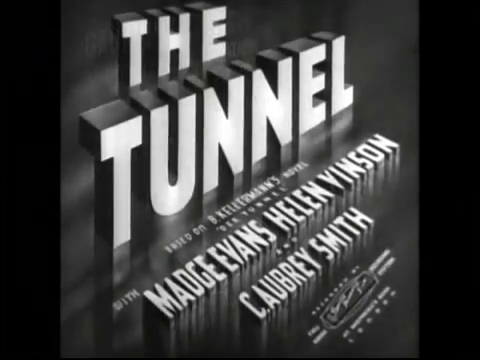
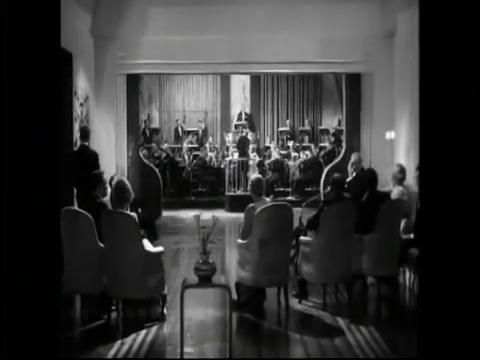
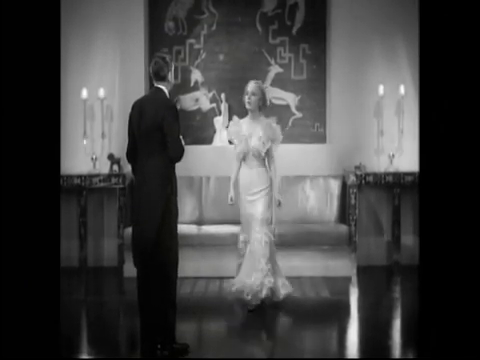
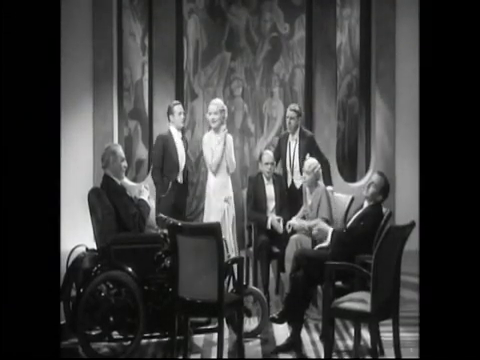
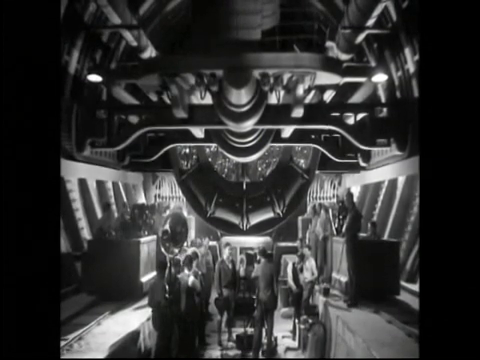
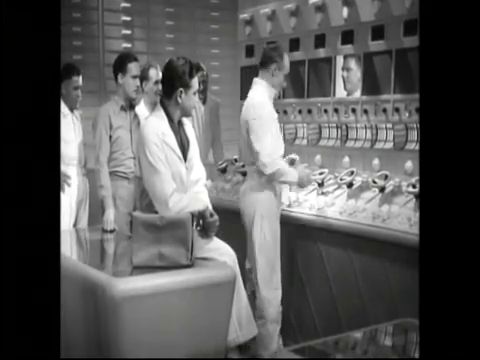
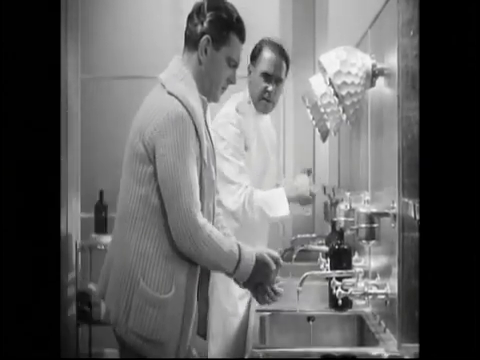
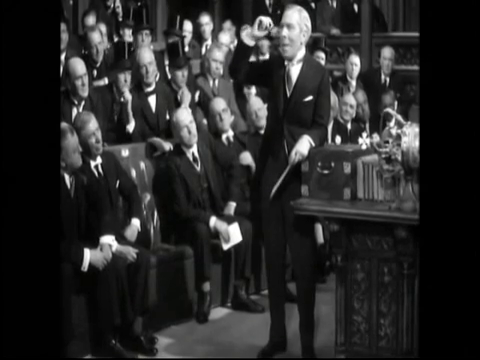
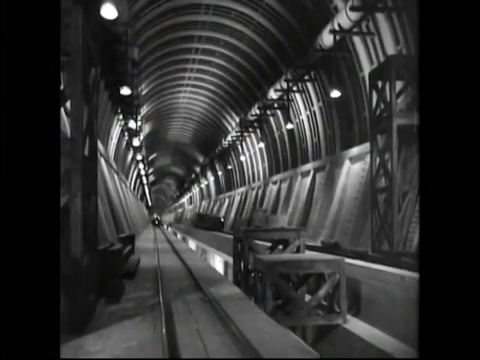
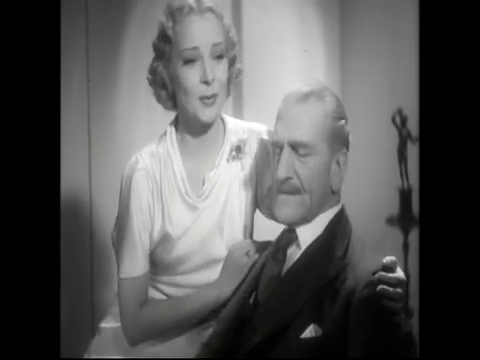
The Tunnel (1935)
Film review #523
Director: Maurice Elvey
SYNOPSIS: Richard McAllan is an engineer who has a dream to build a tunnel between England and the United States. He convinces a group of billionaires including Lloyd, the world’s richest man, to fund the project, but there are many other problems that present themselves on the way to the projects completion, both in terms of McAllan’s private life, and those looking to profit from the tunnel’s failure…
THOUGHTS/ANALYSIS: The Tunnel (released as Transatlantic Tunnel in the U.S.) is a 1935 science-fiction film based on the novel Der Tunnel by Bernhard Kellermann. The film opens up with an orchestra performing for a select group of billionaires at the home of Lloyd, the richest man in the world. Engineer Richard McAllan is also there, to propose the construction of a tunnel underneath the Atlantic Ocean, connecting England and the United States. After much persuading, he manages to get their support, and work on the most ambitious project in human history begins. The plot of the film goes through all the drama and problems that would be associated with such a project, and splits its time between looking at the tunnel itself and the logistical problems, and also how the project impacts McAllan and his relationships with those around him. The balance between the two is well executed, and everything flows and connects nicely. There are a few changes from the novel and the 1915 film version, but they are mostly minor. The setting seems to be a near-future setting, where the Channel Tunnel was completed in 1940, so it’s a different vision of the future rather than what was actually happening in 1940 in Europe.
The tone of the film is very uplifting and optimistic, and McAllan is presented as an idealist who wants to use this project to change the world for the better. We also see political leaders in the U.S. and U.K. similarly making speeches in the U.K. parliament and U.S. congress to this effect. The film stands out in two respects: First, the acting is pretty good for the era, and the emotional scenes are delivered very well. The dated romance stuff and traditional roles still feel dated, but when the film needs to convey more raw emotion, it does so very convincingly; more so than any other film I’ve seen of the era. The cast isn’t too varied, but everyone has a specific role to play, and you get a good sense of what they’re there for.
The second stand out part of this film is the sets and design: you really get a sense of the tunnel’s massive scale in these large sets full of machinery, filled with crowds of men digging. The Tunnel is actually the third incarnation of the film released over two years, with the German and French versions released first, and the English version released after. Each version uses the same sets and mostly the same script, but changes the actors for the different languages (this was before dubbing was a thing). As such, the sets were probably meant to last. The English version also has a different director, which means it deviates a little more from the other two. Perhaps the big difference between the film and the novel is that the film presents a more evenly optimistic tone; and that the end justifies the struggle of the development of the tunnel. The novel focuses much more on the hardships though, and McAllan (Mac Allan in the original German) becomes a worldwide reviled figure. The ending is also a high note, marking the completion of the tunnel and new prosperity for “the English speaking world,” but we never see how this takes shape, but since the film is about the construction and completion of the tunnel, and dealing with it’s consequences would probably dilute that focus. The novel does look a little closer at the effects of the tunnel’s completion, but it’s not entirely optimistic: the tunnel is already shown to be updated (the completion of the tunnel takes a lot of years to finally complete, and by then, it had already become obsolete, as airplanes were now able to carry people across the Atlantic faster than travelling through the tunnel. With regards to this film version of The Tunnel, it has some very strong points in both the acting and the design, and really brings the story to life in this regard. Some parts are a bit predictable and rooted in the old-fashioned values of the day, but there’s enough to make it an interesting watch if you like the films of this era.
-
#522 – The Tunnel (1915)
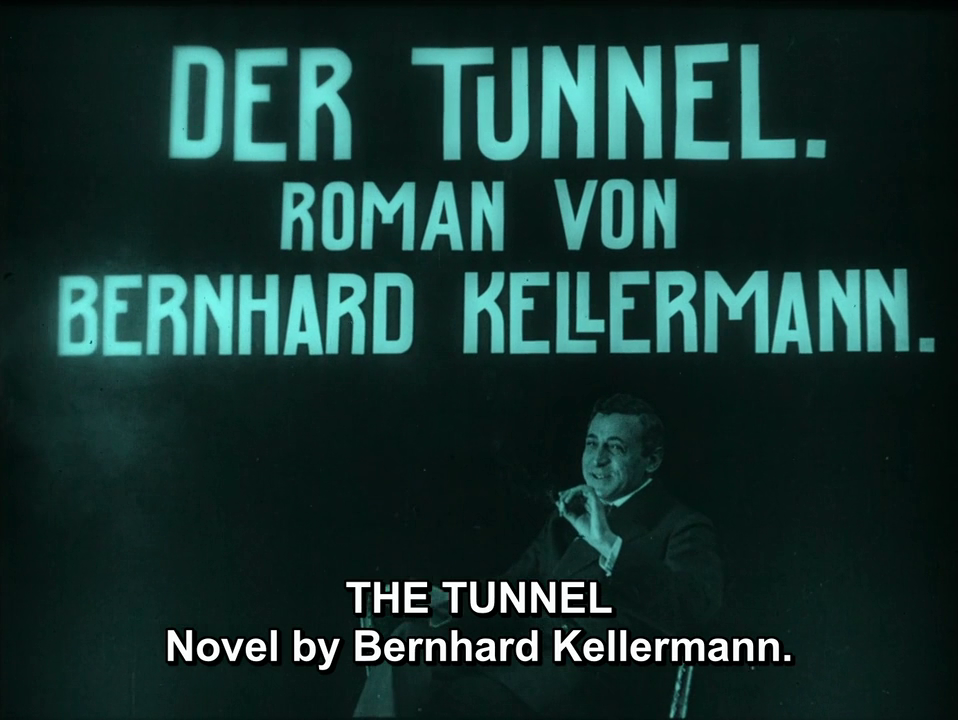
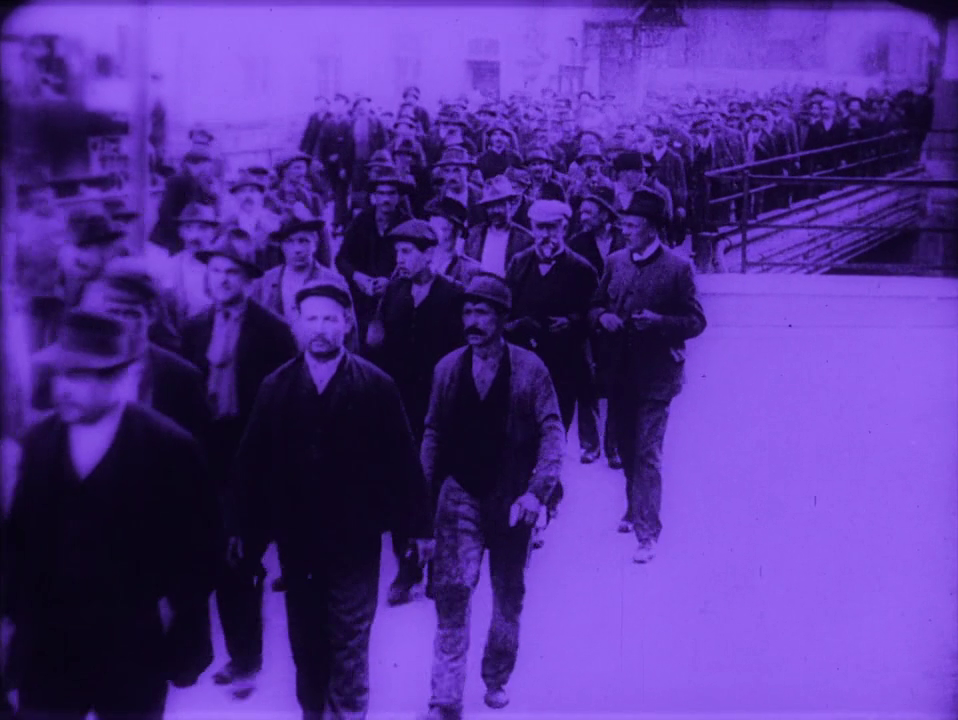
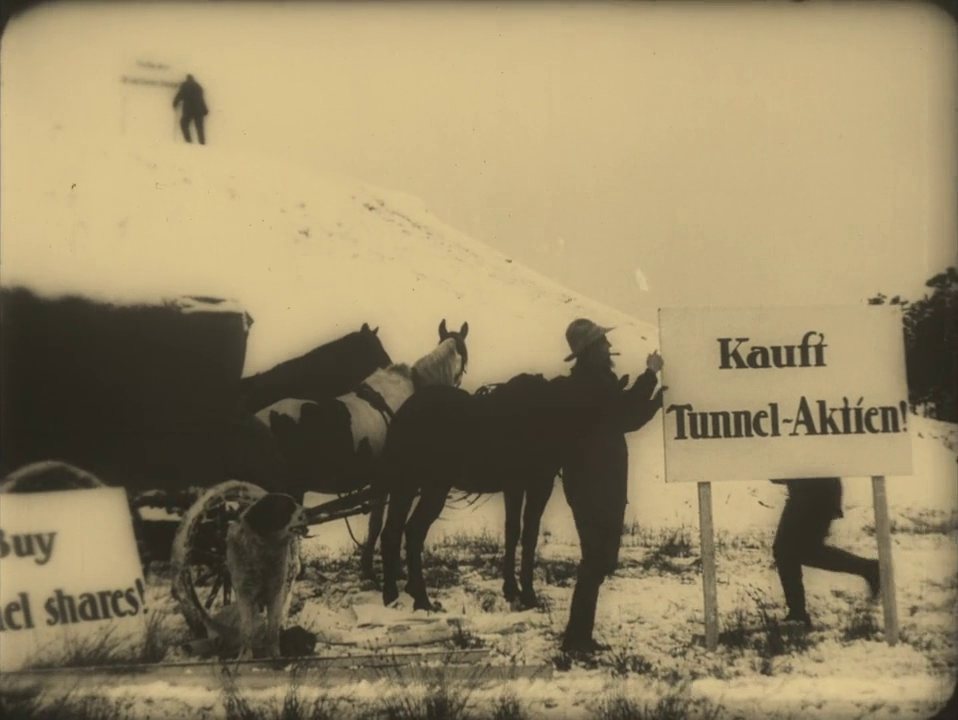
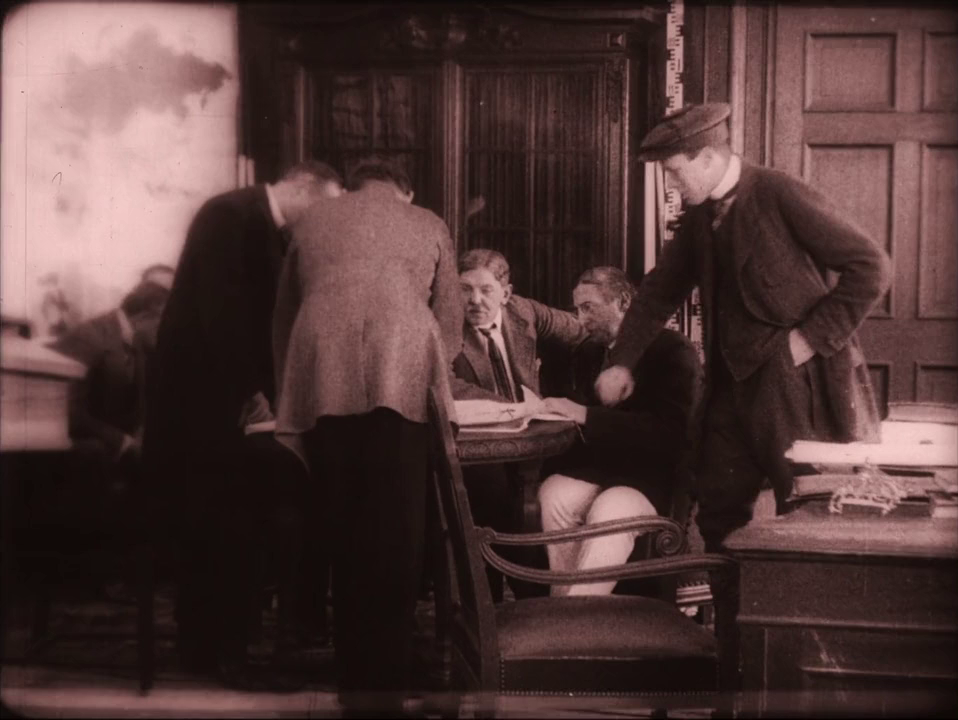
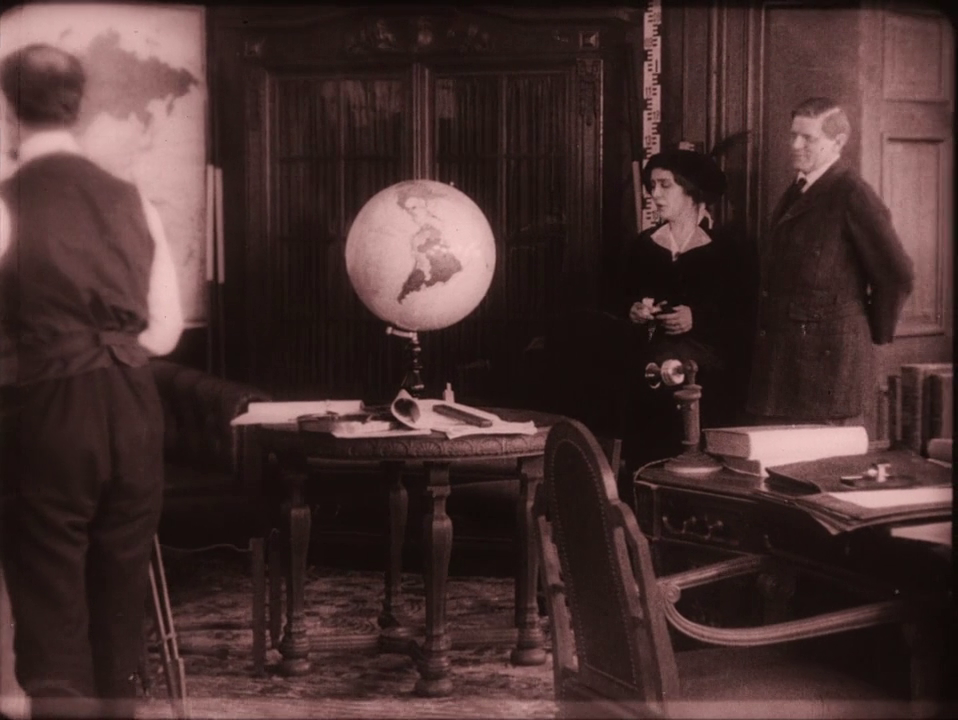
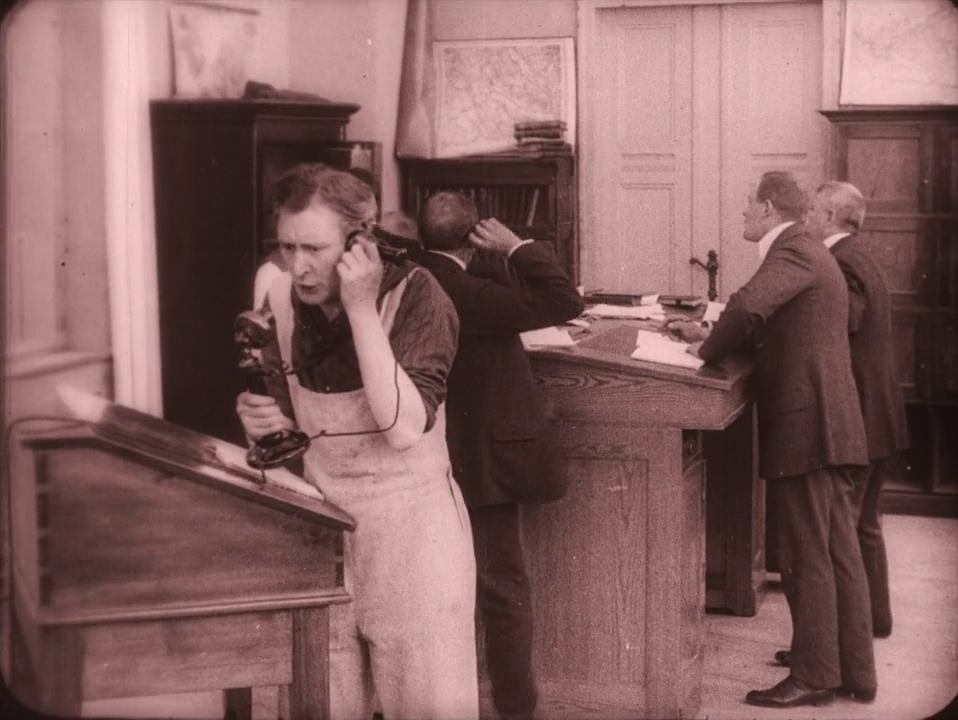
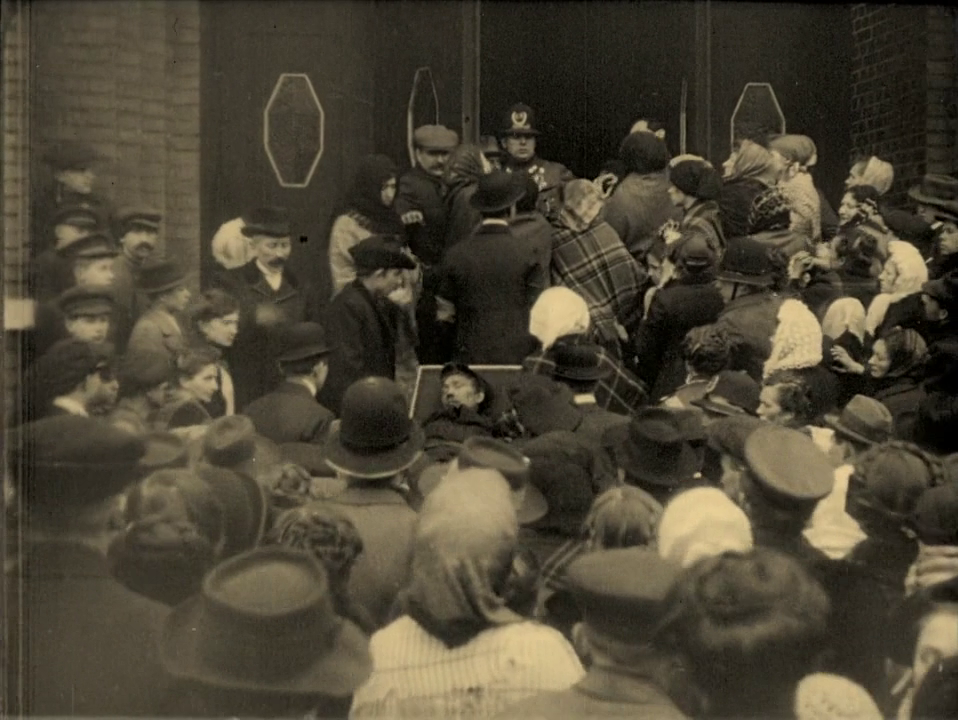
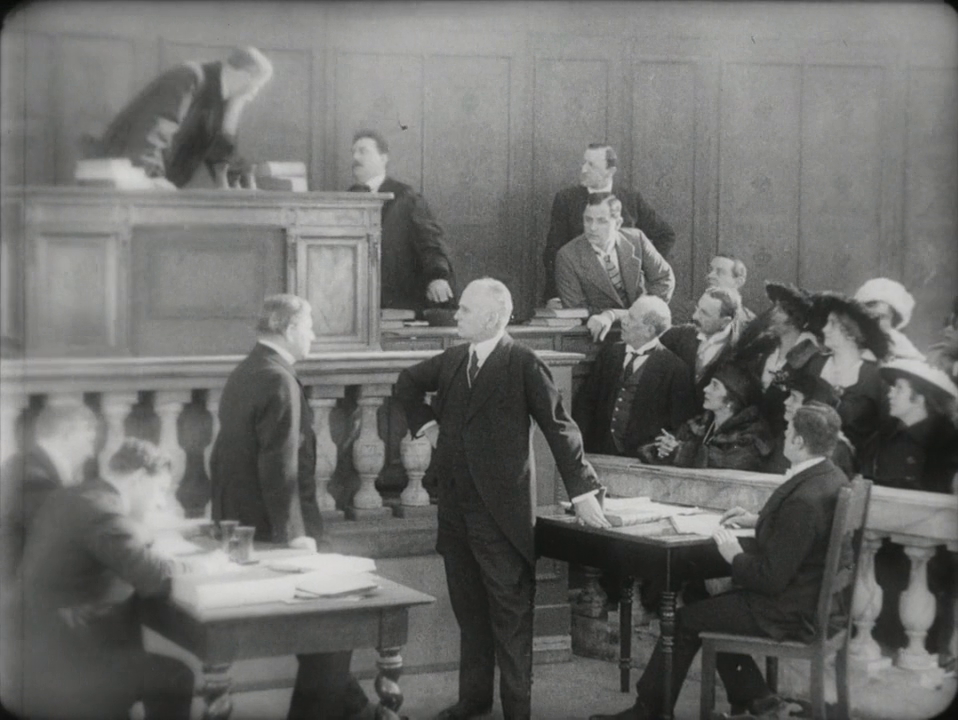
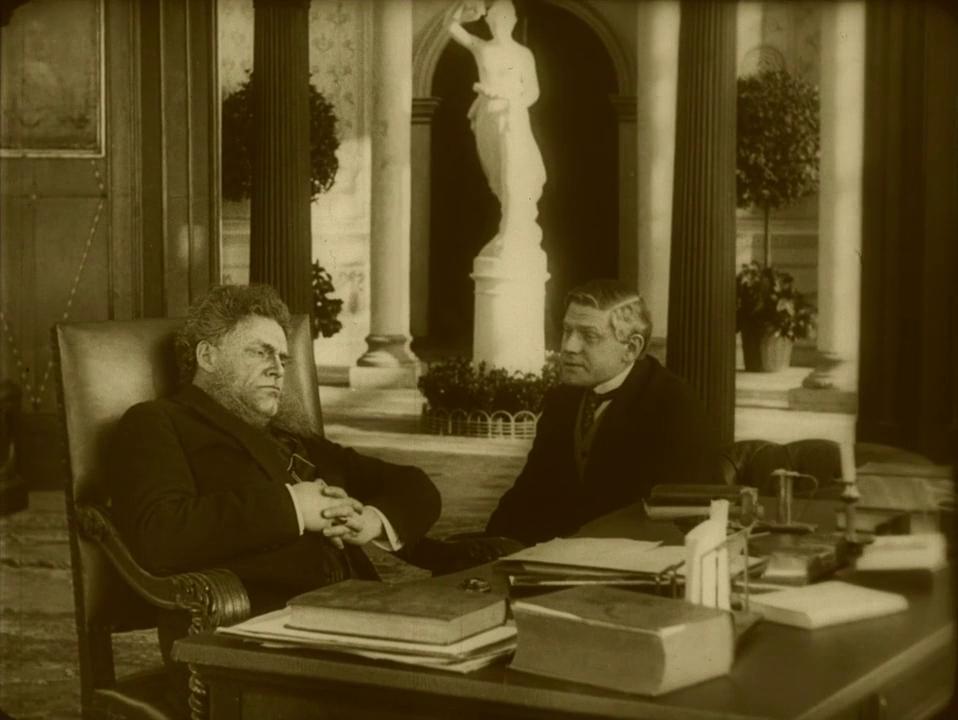
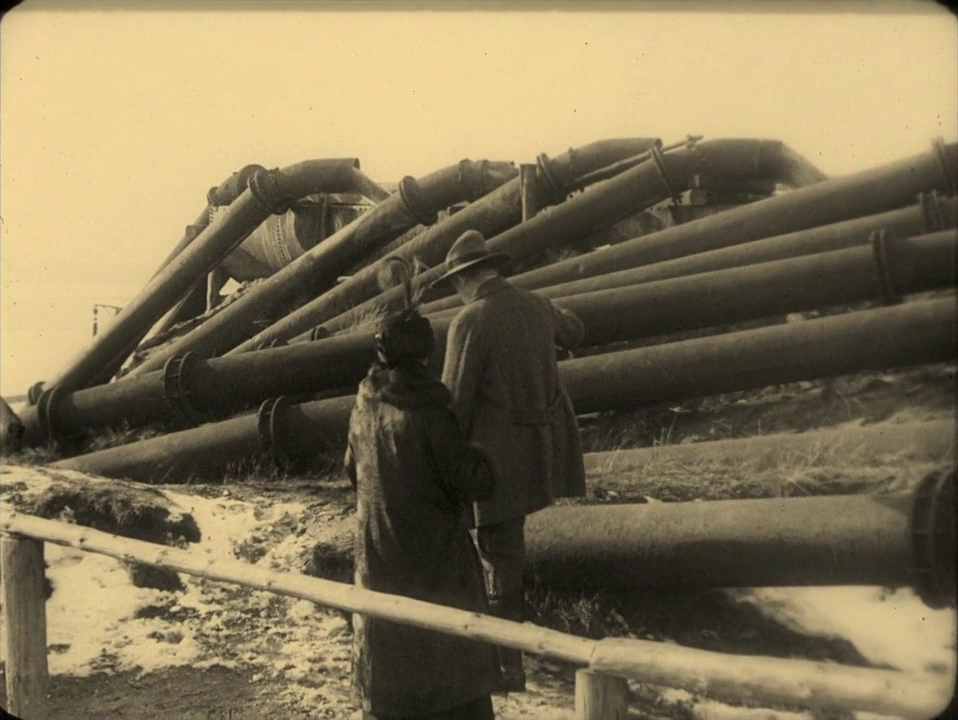
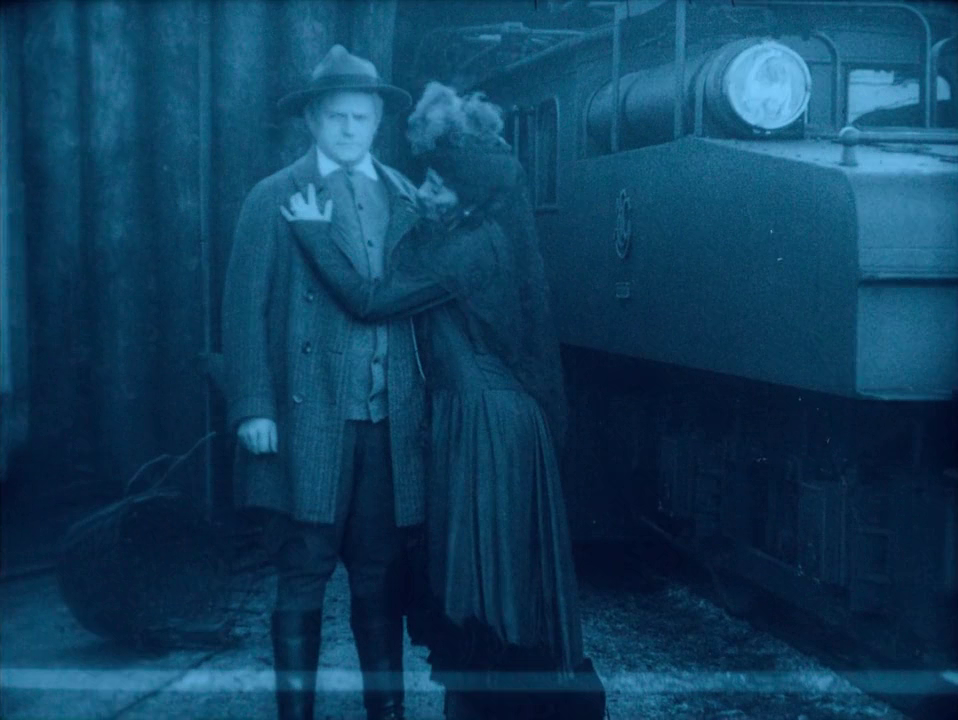
The Tunnel (1915)
Film review #522
Director: William Wauer
SYNOPSIS: Max Allan is an engineer who has the vision of building an underground tunnel that connects Europe and America. He convinces the world’s richest men to fund his venture, including Lloyd, the world’s richest man. However, there are those that do not want to see the project succeed, and will do anything to prevent it’s completion. This, and a number of setbacks, make it difficult for Max to fulfil his vision…
THOUGHTS/ANALYSIS: The Tunnel is a 1915 film based on the novel of the same name by Bernhard Kellerman. The story centres around the vision of engineer Max Allan, who wants to construct an underground tunnel between America and Europe under the Atlantic Ocean. The story of the film is fairly simple: it’s less of a traditional story centred around the characters and a plot, but more so focuses on a vision for the future and what such a project would look like. It was probably a vision of hope in a world in the midst of the first world war. Max has to persuade the billionaires of the world to fund his project, so arranges a meeting in New York to persuade them, giving an opportunity for the film to make it’s point to the billionaires as well as the audience. Being a silent film, there’s not too much room to create engaging dialogue or complex set-ups, but even in the context of the silent film era, this film feels very basic and minimal: the interstitial text describes what is going to happen in the next scene, and then it happens. It’s very literal, and as the text already has described what is going to happen, there’s little room for surprise or interest to develop.
The film does a good job of exploring the issues that would surround the making of such a project: it is described as taking nearly twenty five years to complete, which even then, that might be described as ambitious. There’s lots of footage used of masses of men hard at work digging the tunnels, and this really gives a good sense of the scope of the project. I’m not sure if the footage was shot specifically for the film, but it fits in well. There’s also a balance between the problems that the workers face, and the problems that Max faces on a personal level, and even though the characters aren’t really fleshed out in any way, you still get a sense of the problems they are facing.
The Tunnel is a vision of hope for what humanity can achieve. The ending text describes how when the tunnel was finished it brought about peace and prosperity for all: that might be a bit too simple of an ending, but it’s definitely the message that the film is going for. Specifically, the issue of people being scared of technological progress will certainly make enemies of those still rooted in tradition, but that should not stop people with a vision. As you might expect, there’s a few instances of problematic portrayals of non-white/European people and cultures, but these are limited. Though the film is dated and is not very entertaining, it does have a message regarding progress that is still relevant, and only for that reason it would be worth a watch.


